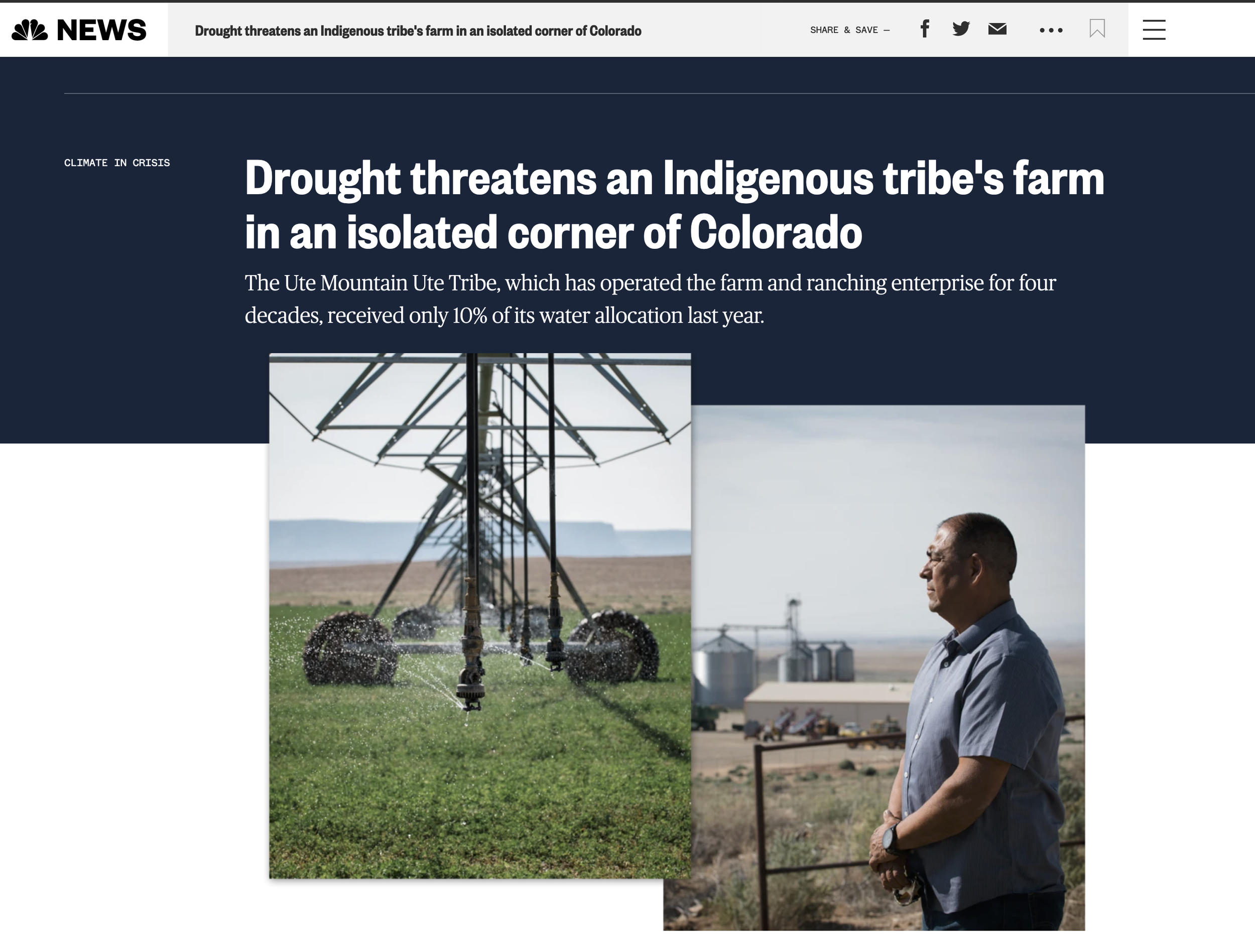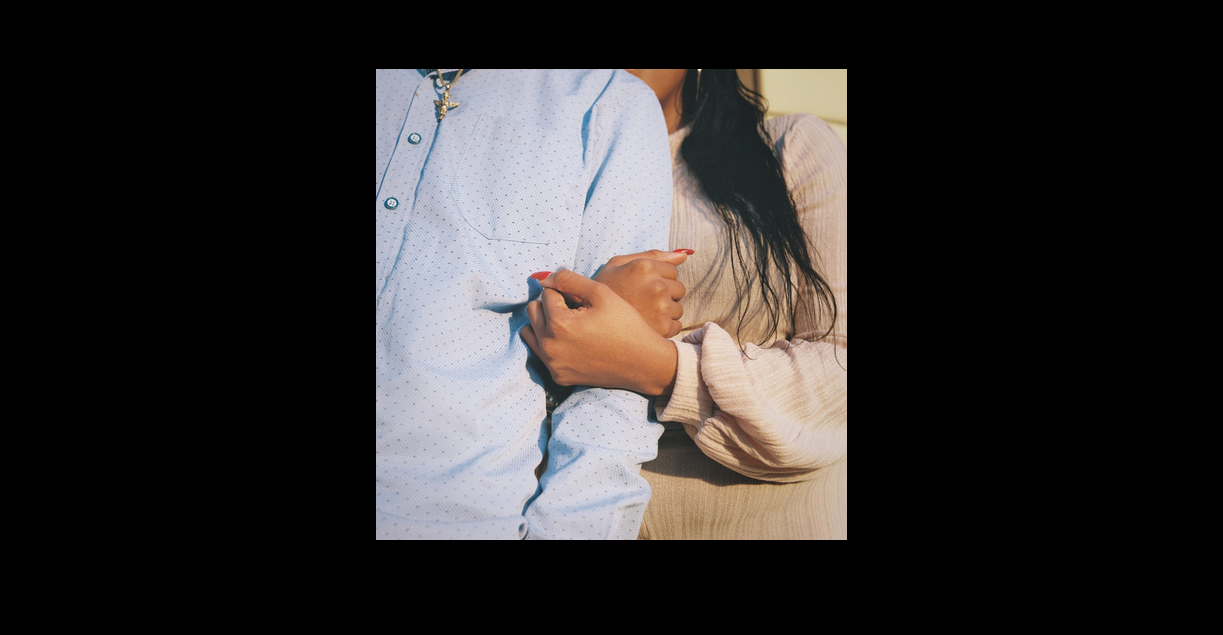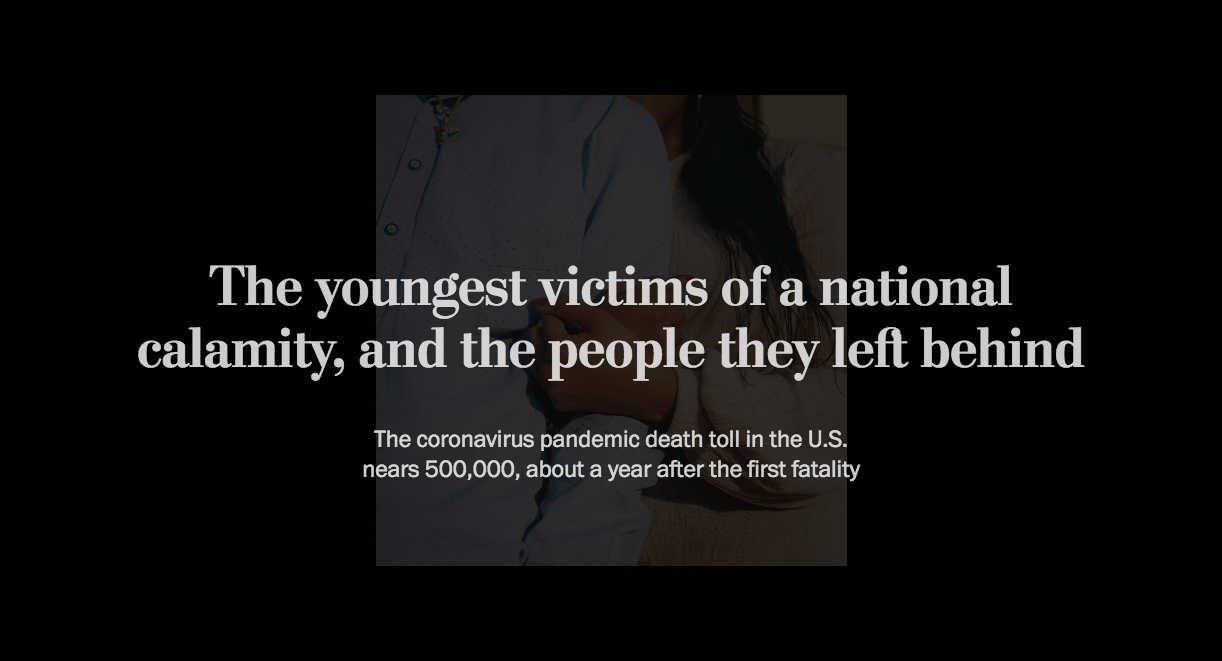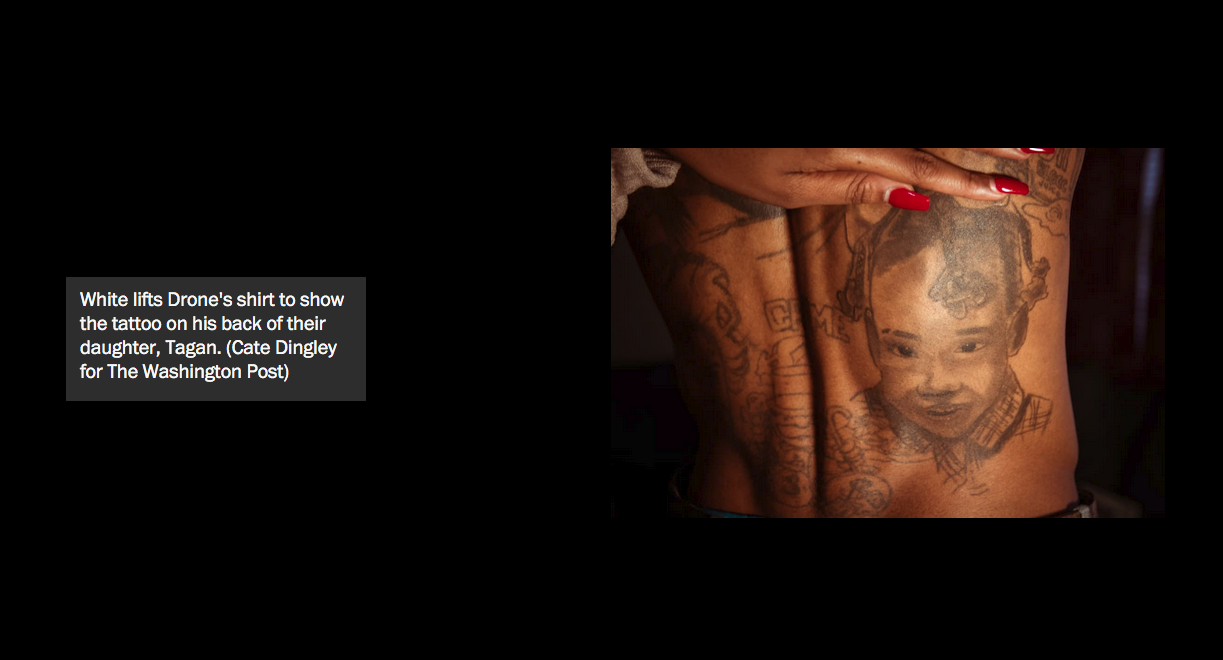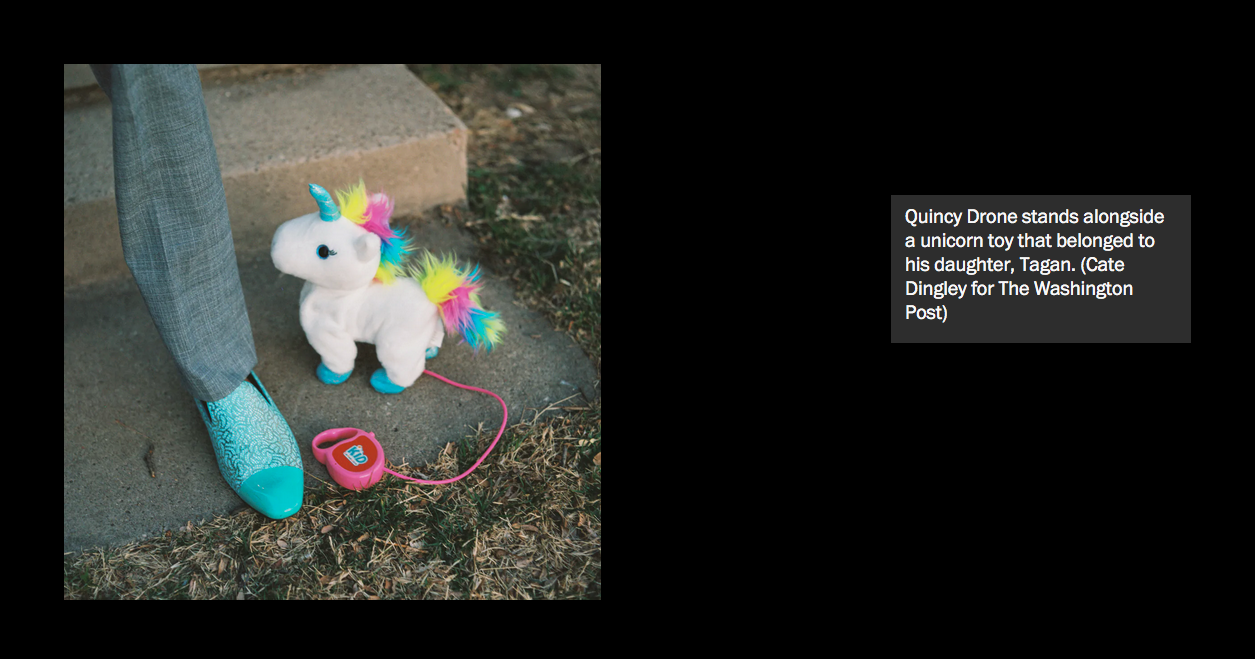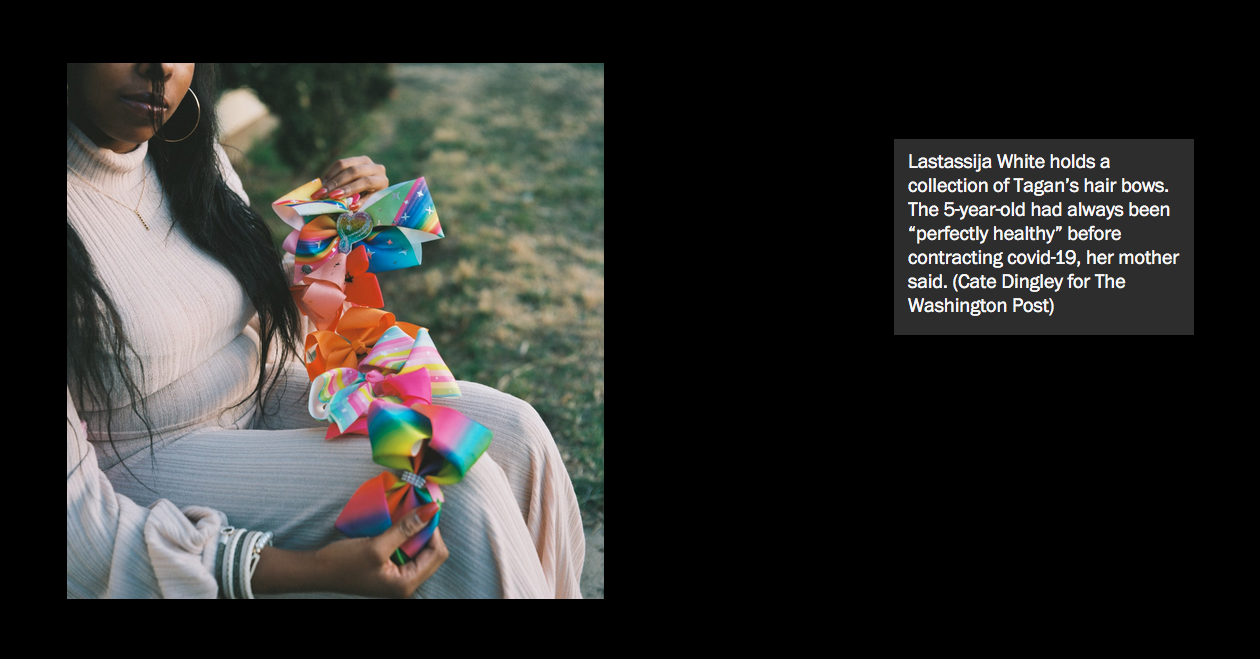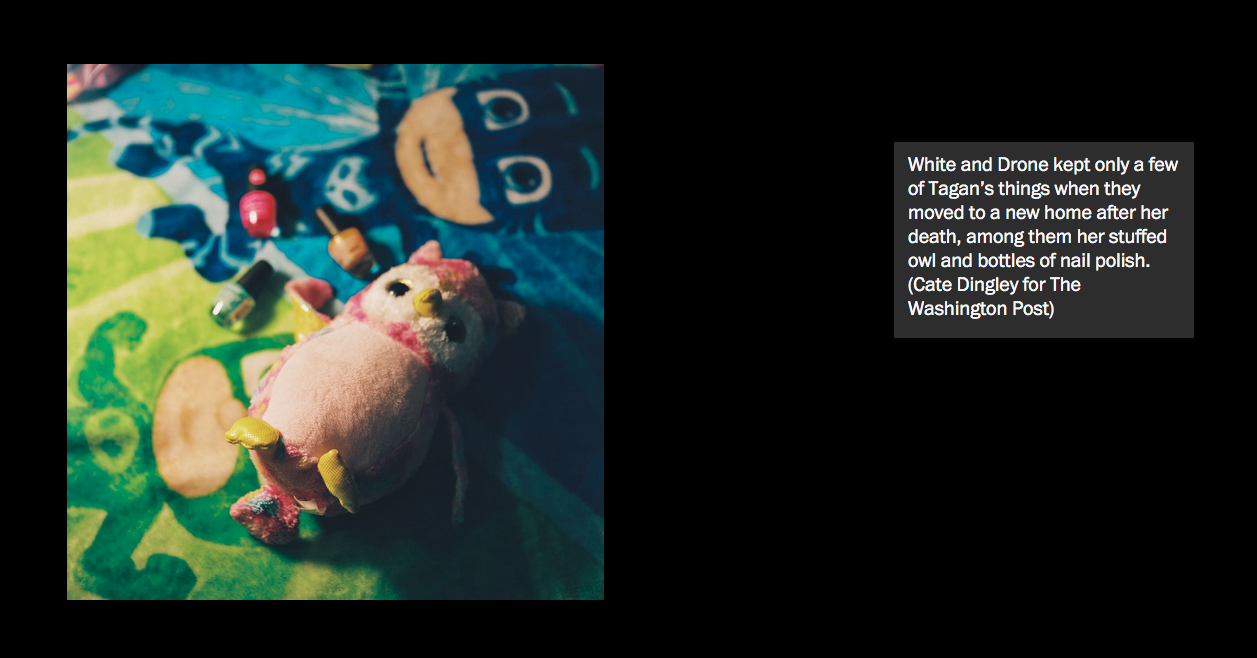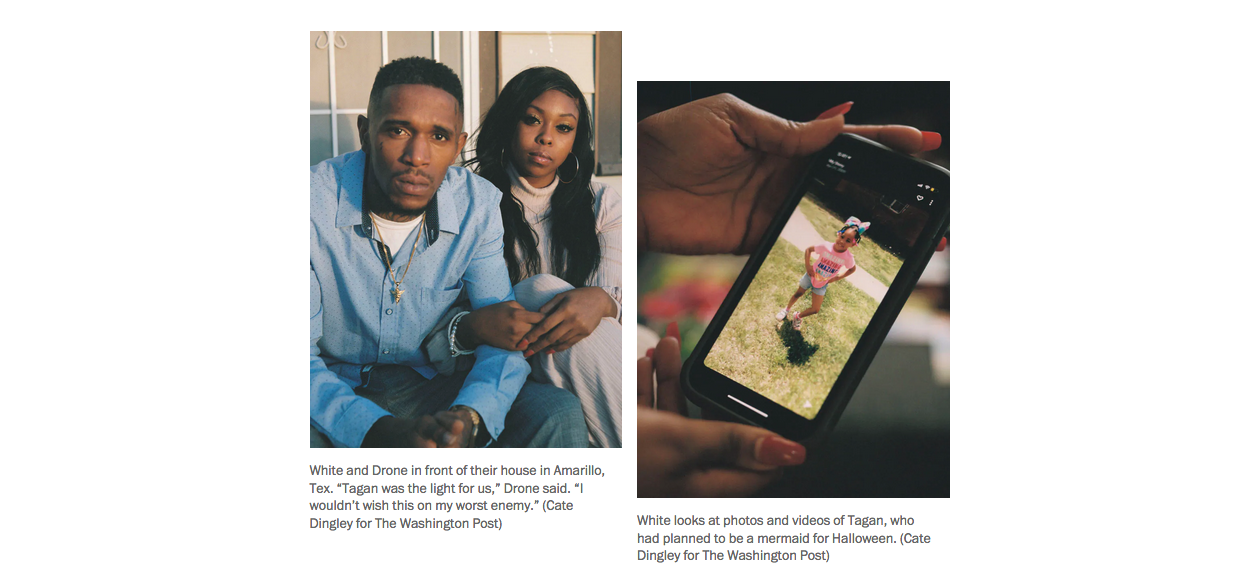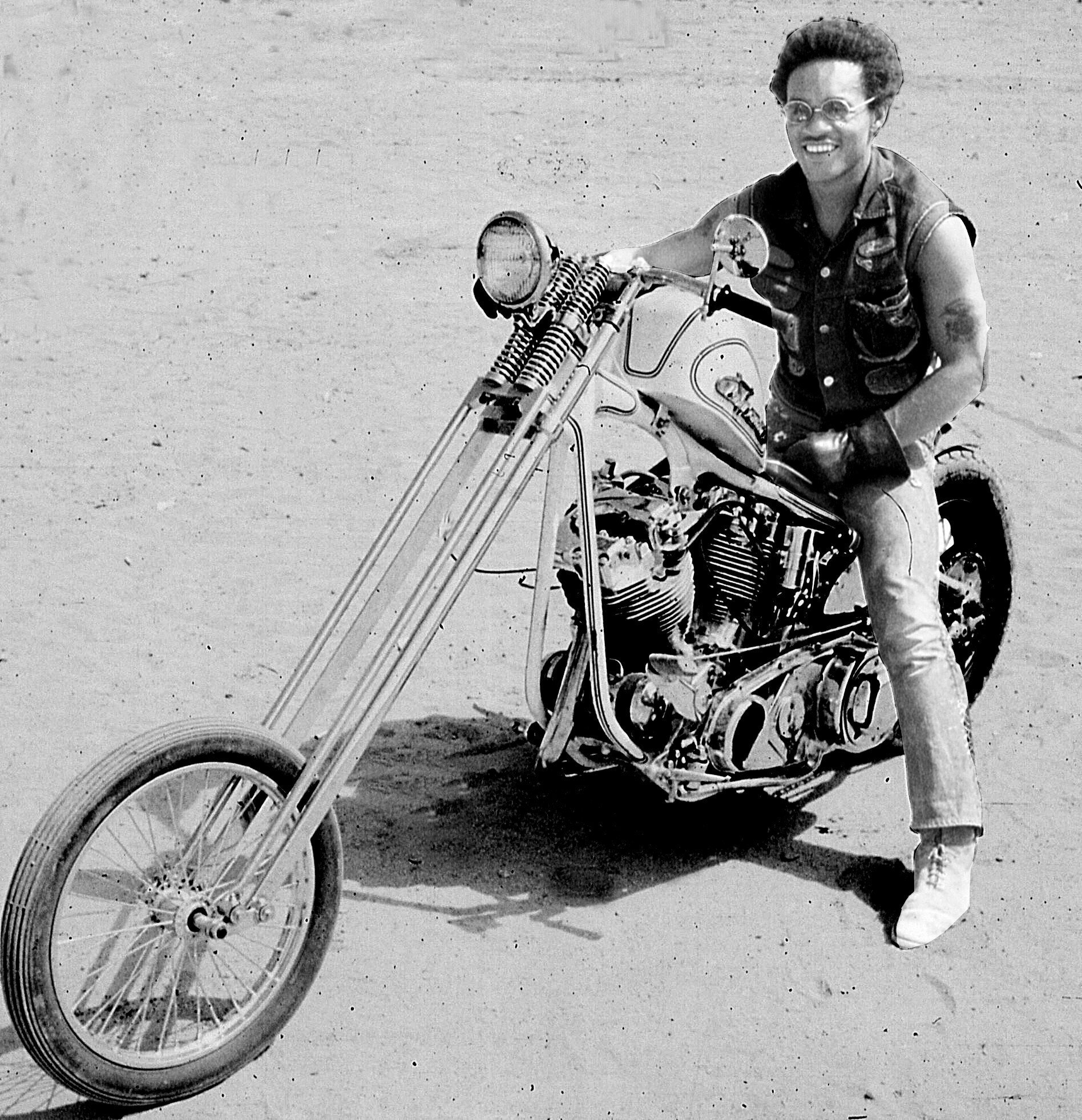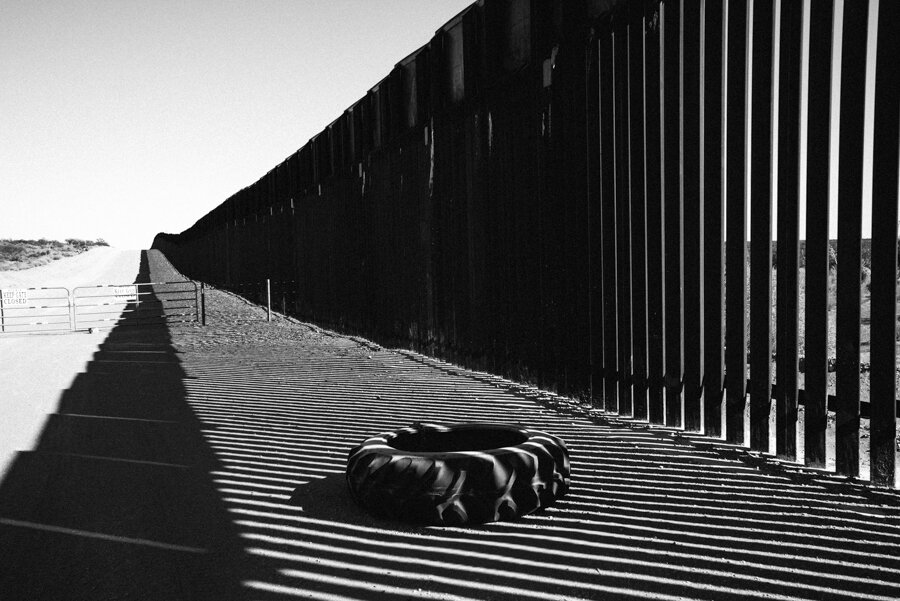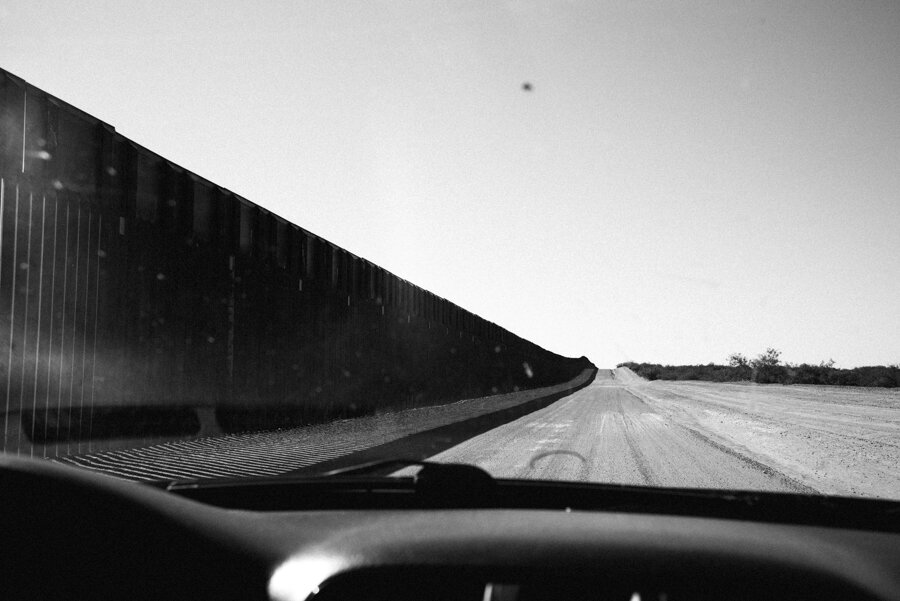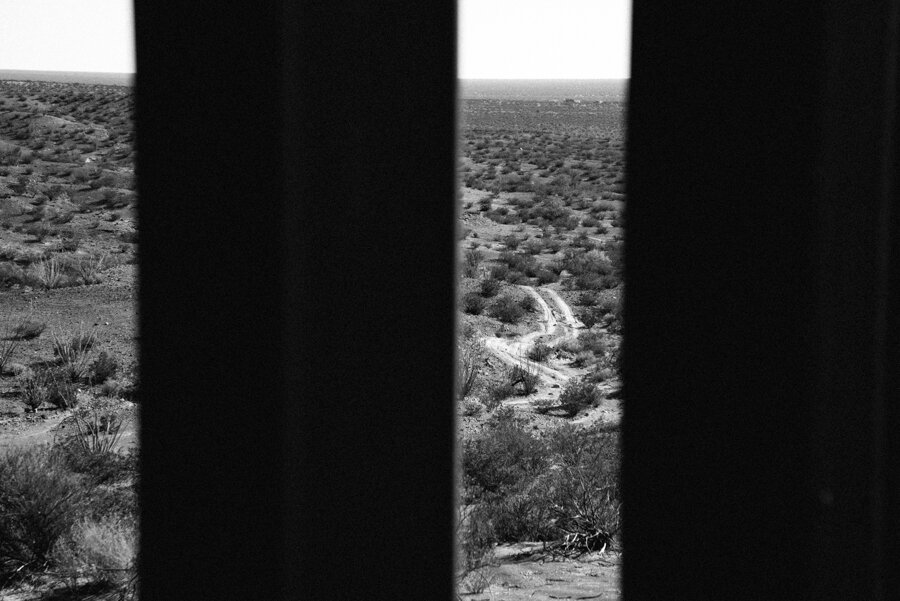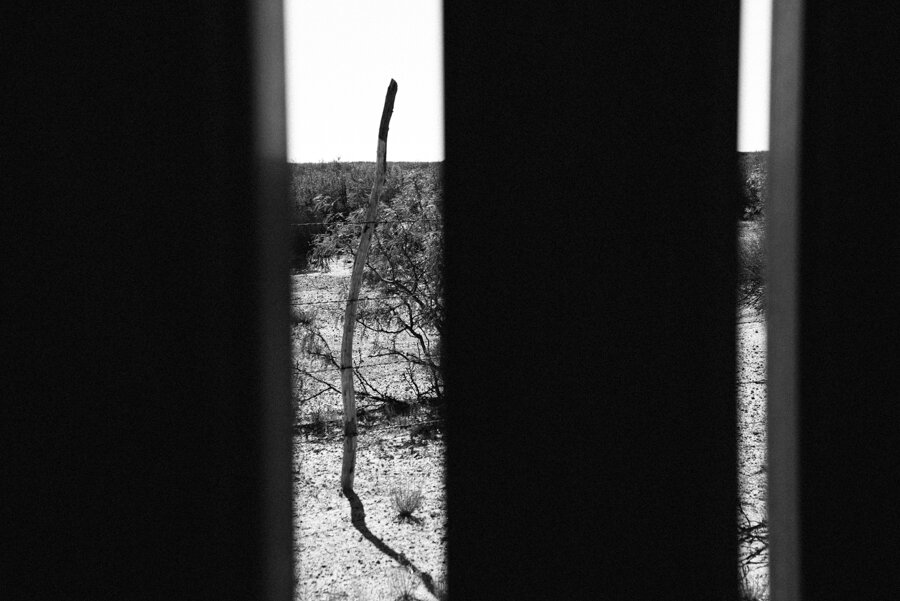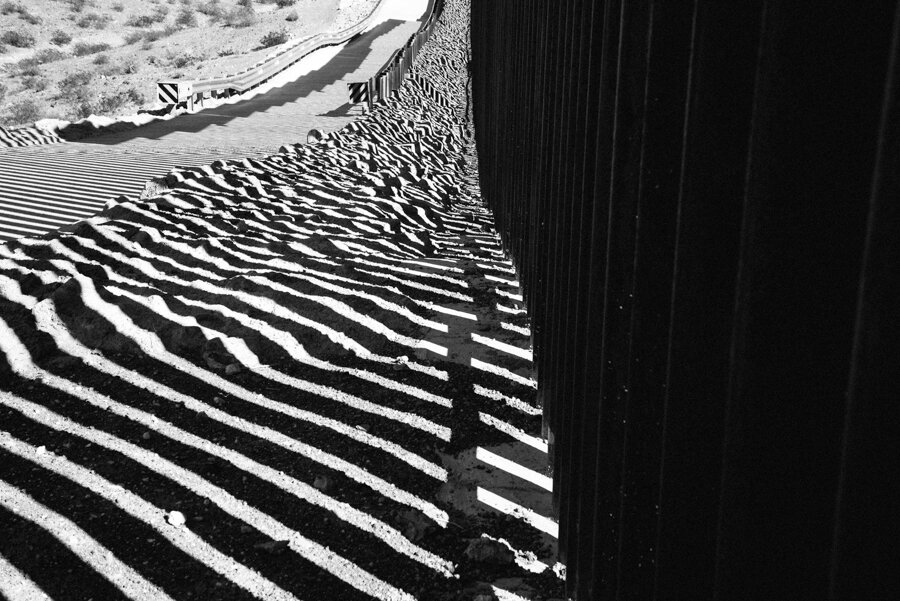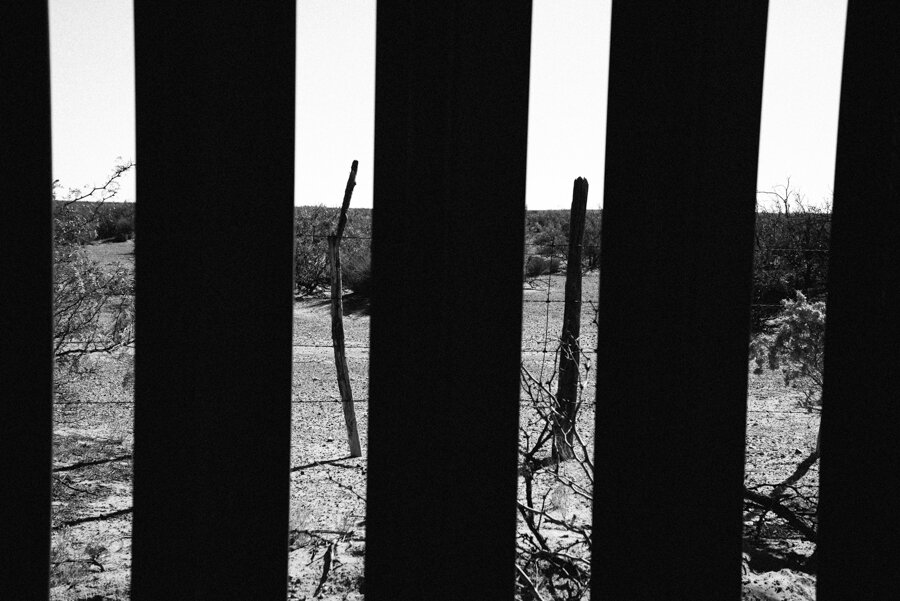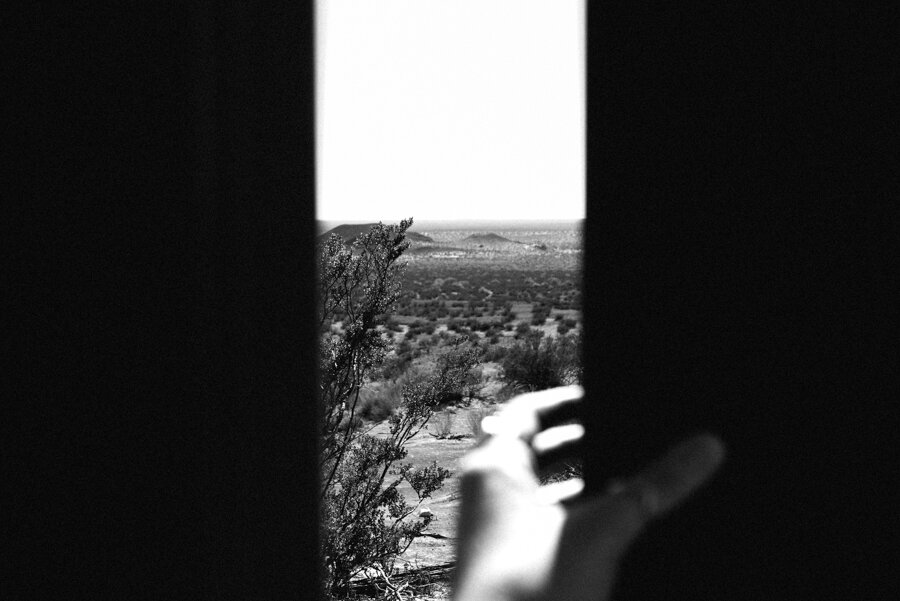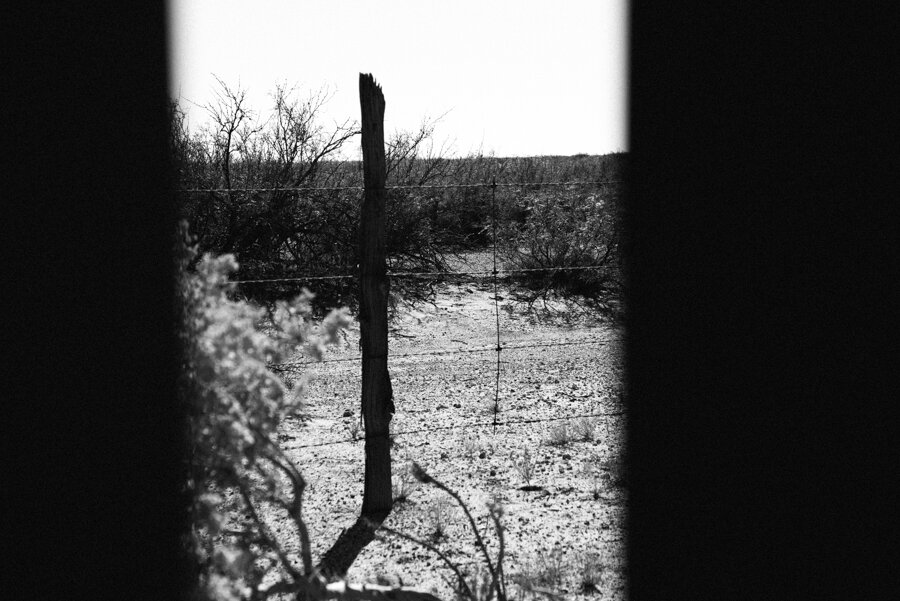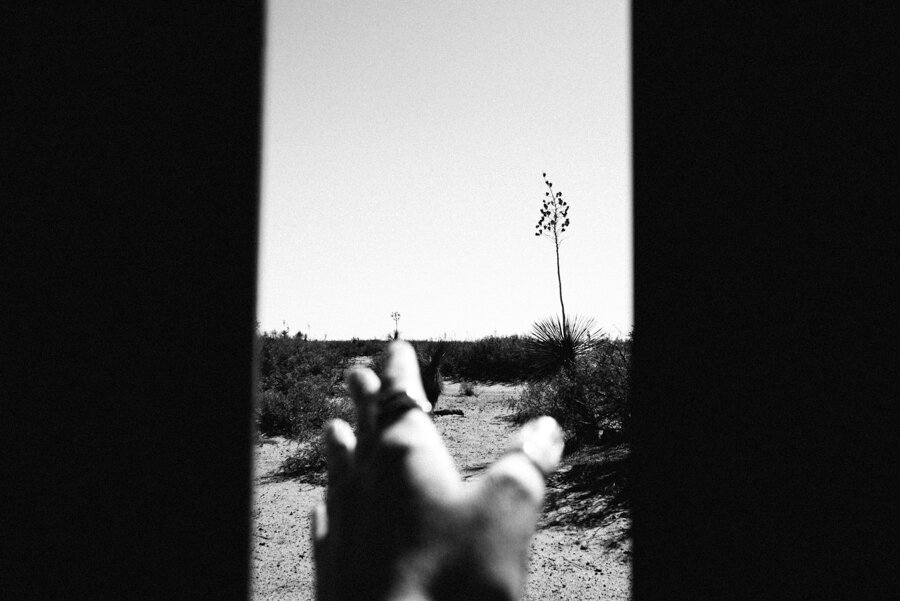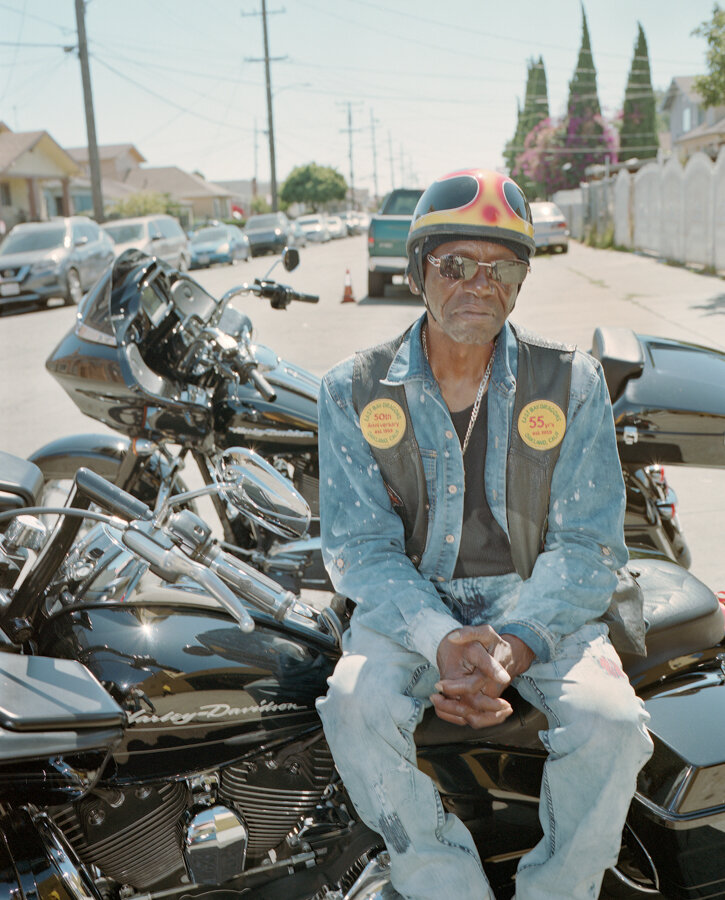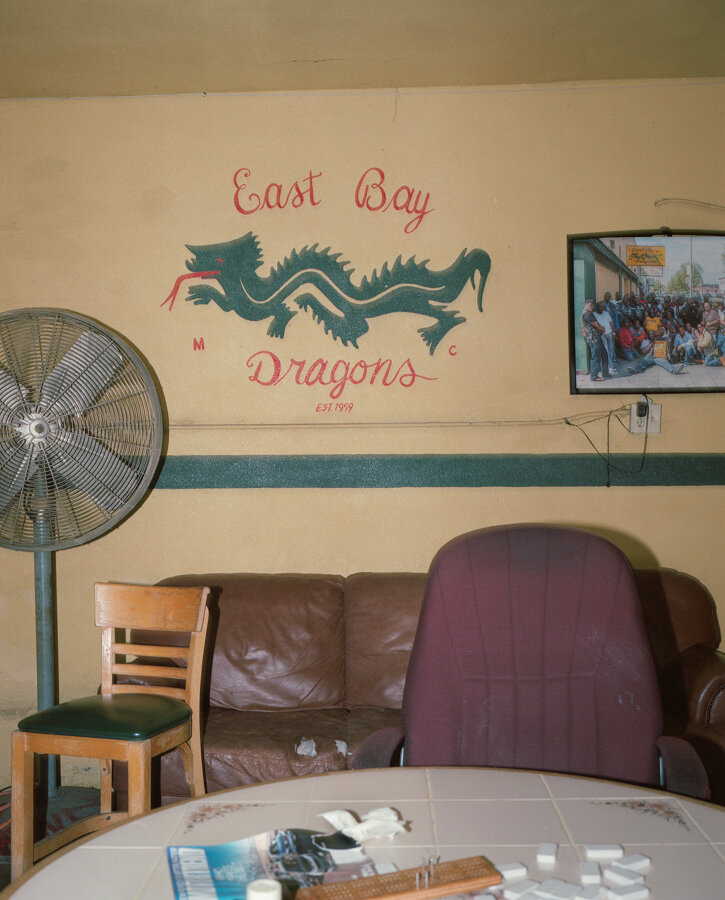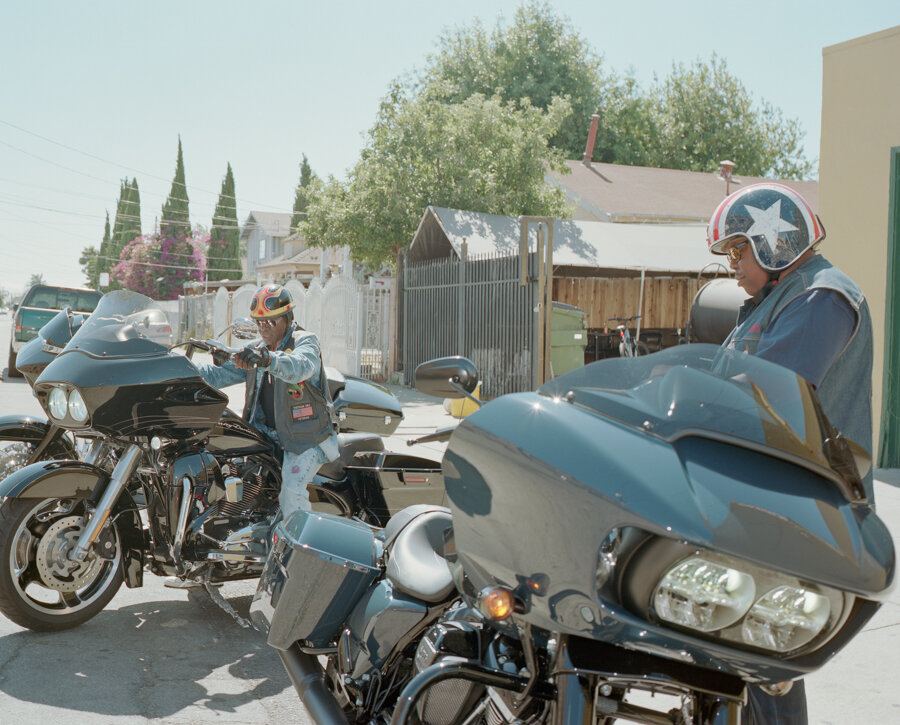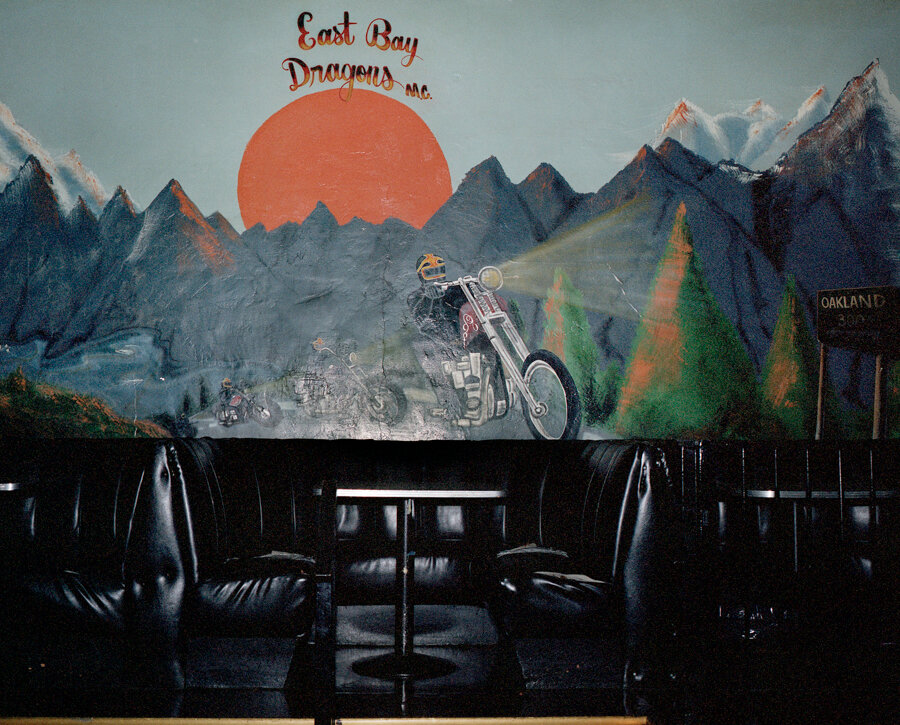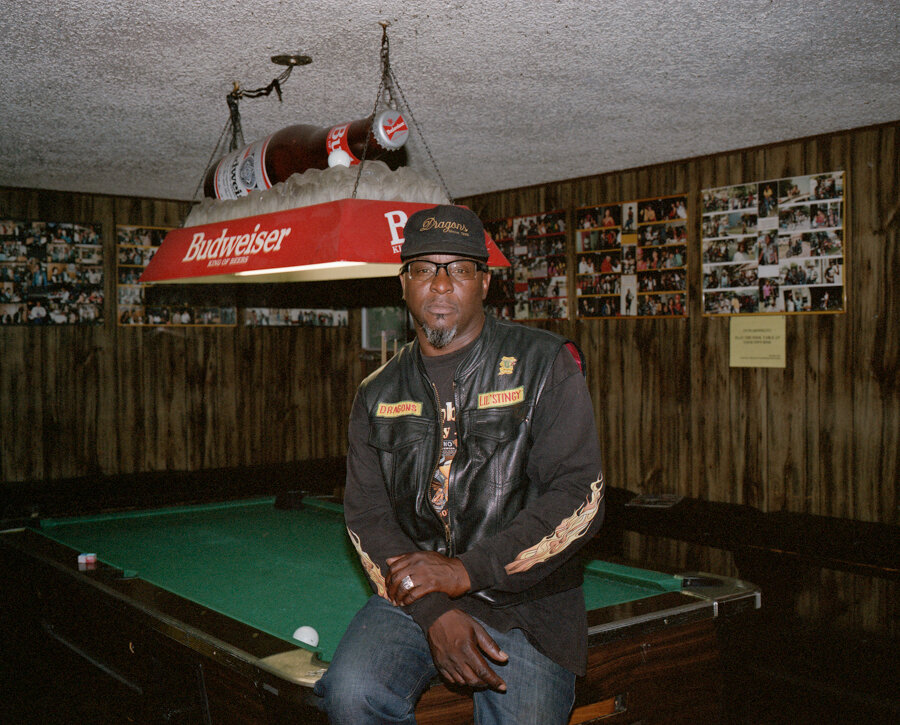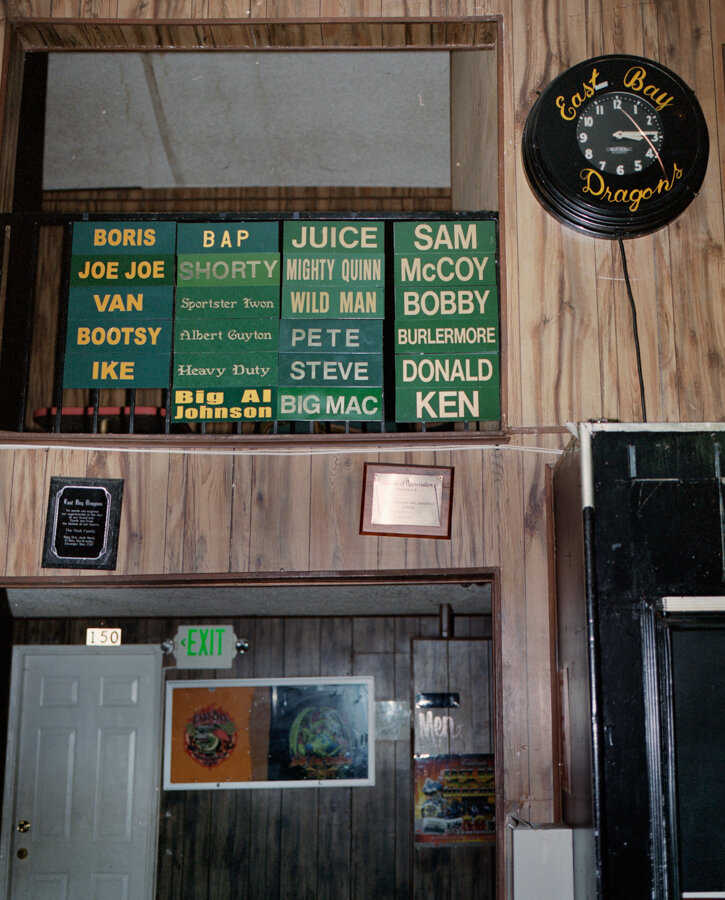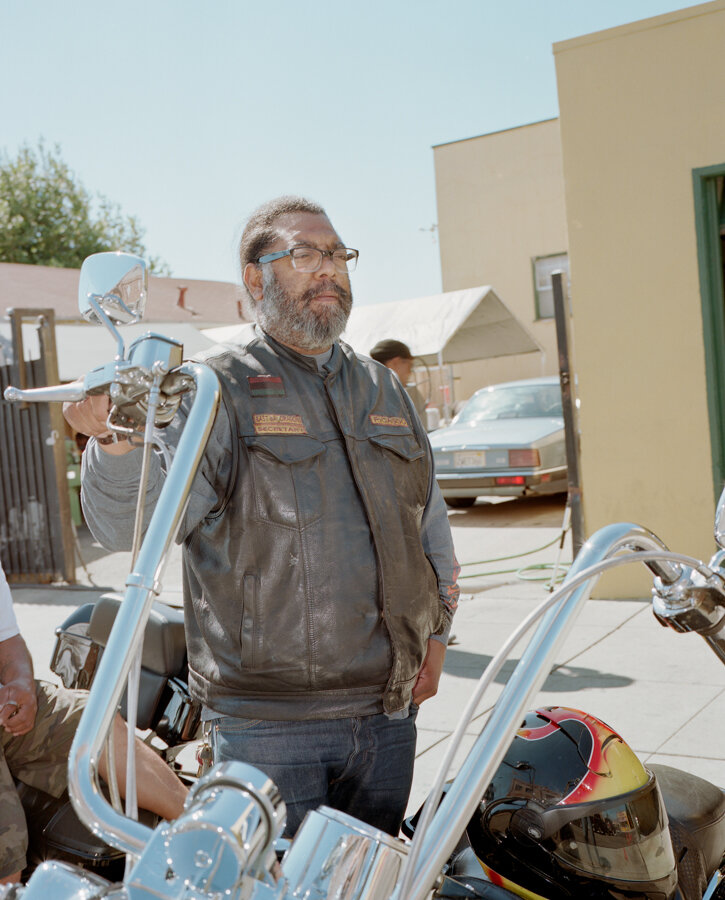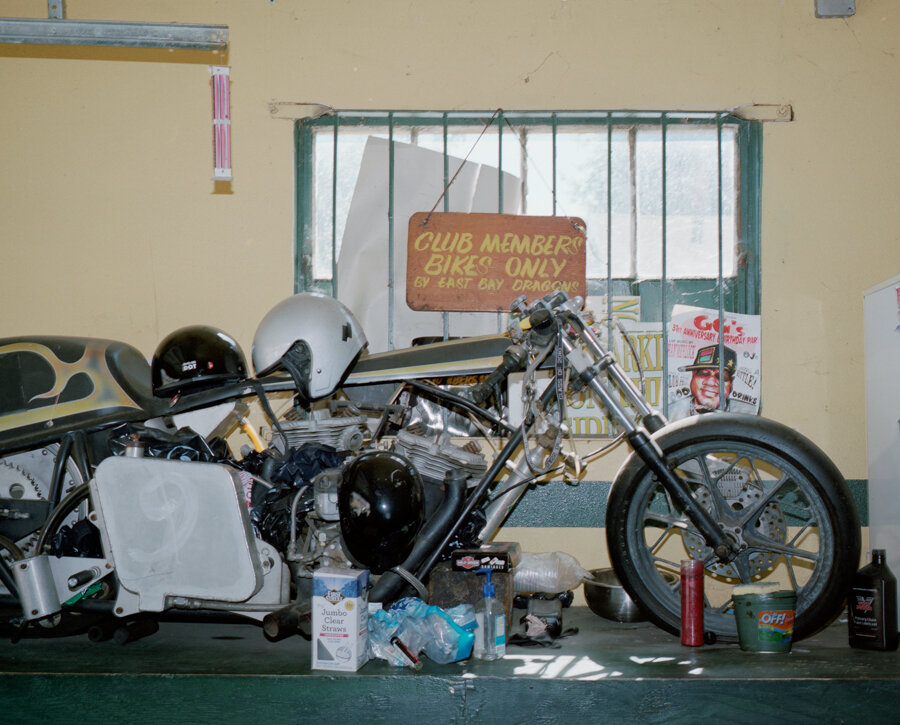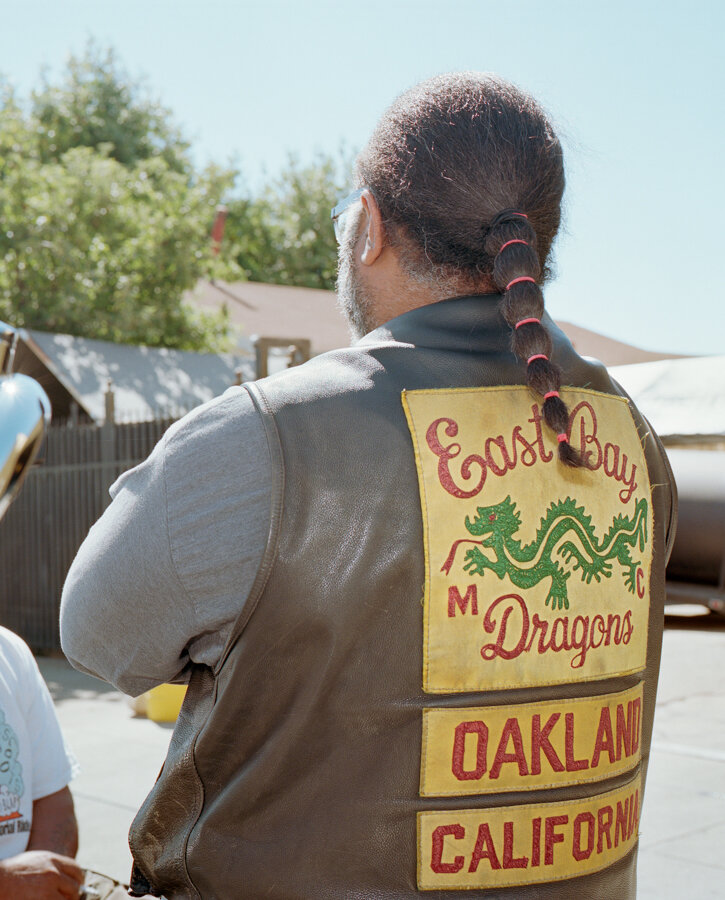In a recent assignment for NBC News, I went to Southwestern Colorado to visit the Ute Mountain Ute Tribe Farm & Ranch, who are feeling the effects of years of drought. Read the article here and see more of my photographs from this trip.
Covid-19 vaccinations on the Navajo Nation
I photographed ongoing covid-19 vaccinations on the Navajo Nation in Gallup, New Mexico for Bloomberg News on March 23, 2021. On this day, the temporary clinic at the University of New Mexico was giving the second dose of the Pfizer vaccine to individuals who’d received their first shot two weeks prior.
The Navajo Nation had some of the worst covid mortality rates per capita in the United States in the spring and summer of 2020. Now, the Navajo Area Indian Health Service has vaccinated approximately 75% of their user population—people who have visited them in the last three years—and they’re still going. I felt the sense of some light at the end of the tunnel.
Read the full Bloomberg story, here. My photo is at the very end.
The Washington Post: Covid's Youngest Victims
Earlier this month I went to Amarillo, Texas to meet Quincy Drone and Lastassija White. In the Fall of 2020 their five year-old, Tagan, started in-person kindergarten, and in October, she fell sick. When her mother brought her to the hospital, Tagan tested positive for Covid-19 and was sent home. Later that night, she died.
Quincy and Lastassija found it too painful to return home where Tagan spent her last days. These photographs show who and what Tagan left behind--young parents, bereft, a few of her favorite stuffed animals, a colorful hair-bow collection.
“Look what happened to us,” Drone said. “People have to take it serious. And it’s not over. We’re still in the pandemic. We’re still in 2021. Do you think no more kids are going to die? Tagan was the light for us. I wouldn’t wish this on my worst enemy.”
"As the nation reaches the milestone of a half-million deaths about a year after the first American succumbed to the coronavirus, the number of children killed by the disease remains relatively small… Each death represents a shattered family and a trauma deepened, parents say, by the rampant belief that kids can’t get covid, or that it doesn’t much harm them when they do… The children who have died of covid-19 are, even more than among adults, disproportionately children of color — about three-quarters of those who’ve succumbed to covid so far, according to CDC data." -italicized text by Washington Post authors
The Washington Post: Food Insecurity During Coronavirus
Thirty percent of American households where people have lost income because of the virus have missed meals or relied on food handouts in recent weeks, according to a Kaiser Family Foundation poll.
Many people who are new to worrying about getting food had low incomes at the start. Approximately a quarter of people making less than $40,000 year said the virus has pushed them to skip meals or seek free food, the poll found.
But the surprise to many food bank managers — and to their new clients — is the number of people one step up the income ladder, in the $40,000 to $90,000 range, who are short on food. About 12 percent of Americans in that income bracket said they have missed or cut the size of meals in recent weeks.
“We have a group of people who are suddenly struggling to get food,” Santa Fe Mayor Alan Webber said. “They’re people who are really unused to asking for help, people who thought they had a pretty good handle on life.”
Read full article here / text above & below by Marc Fisher/The Washington Post
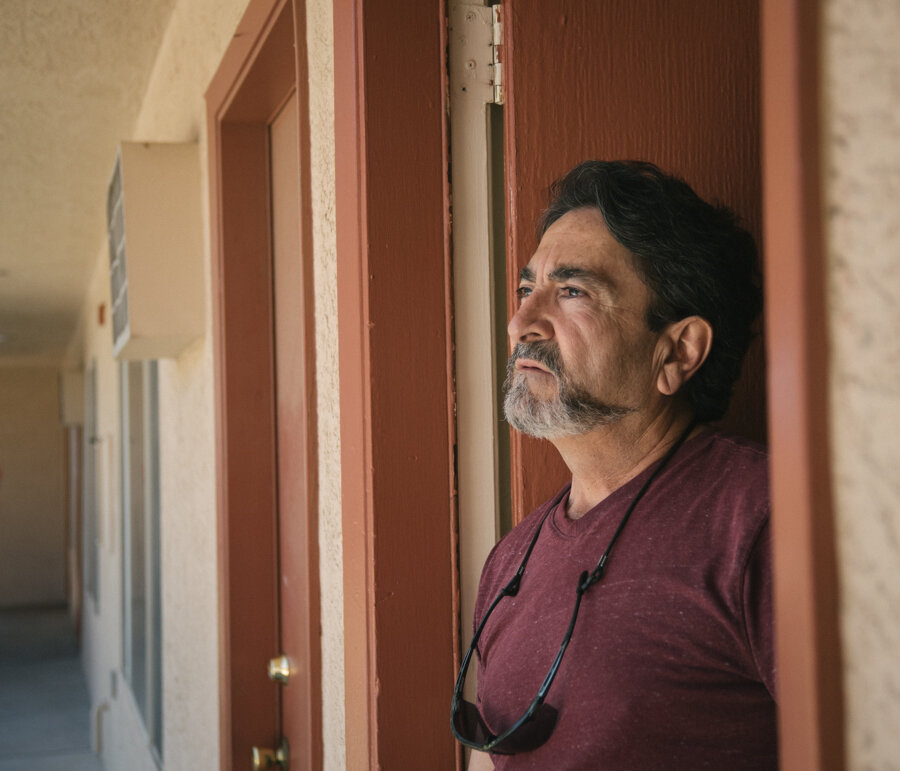
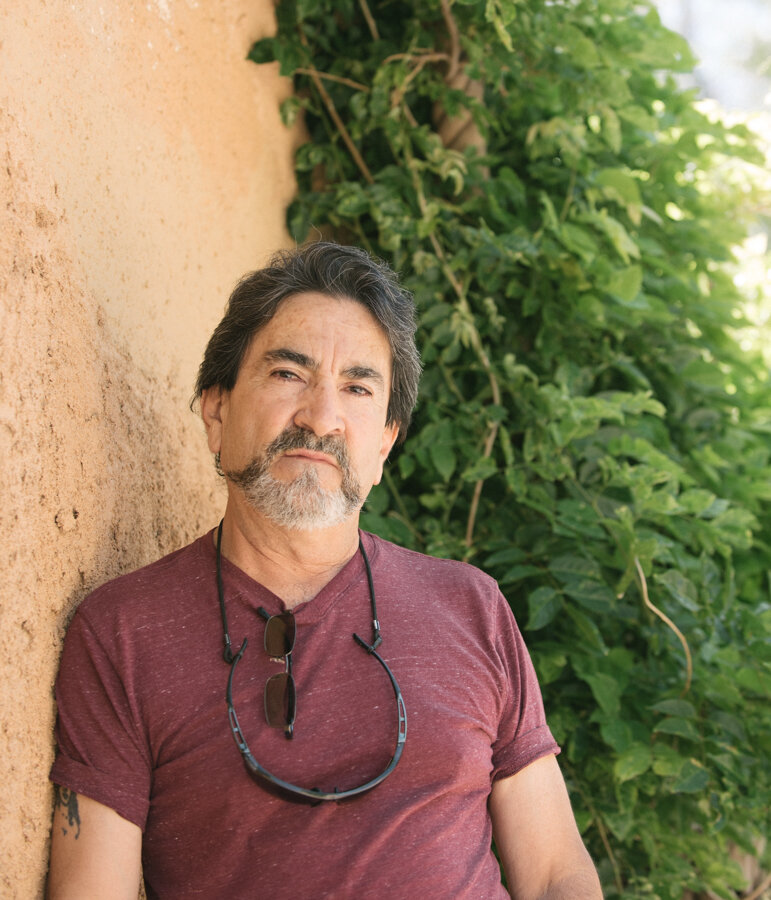
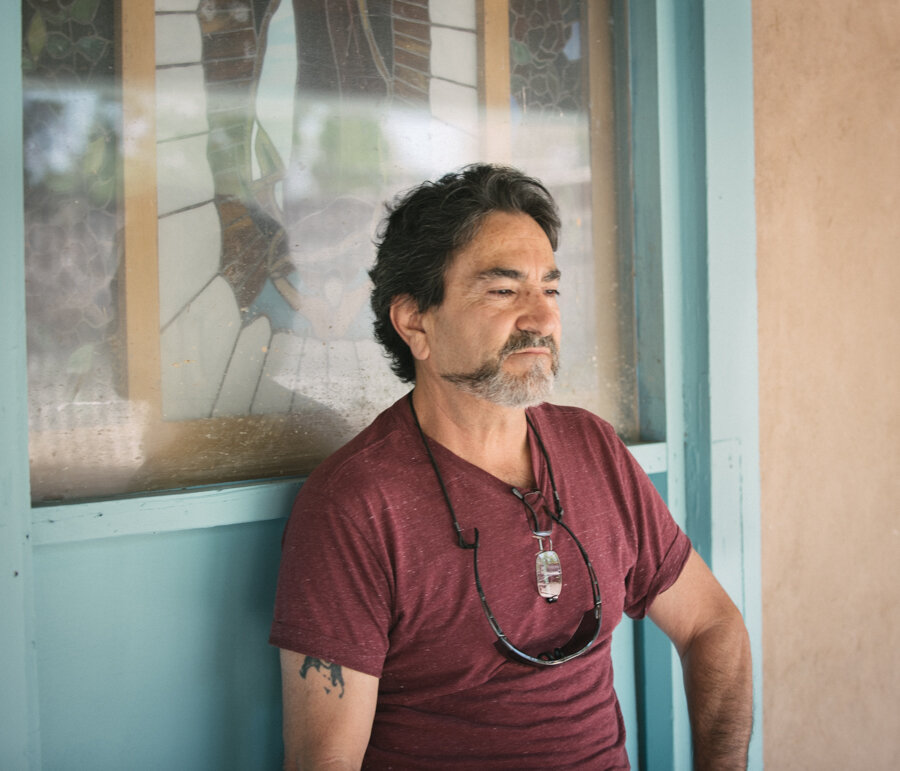
The Robert Garcia that Robert Garcia always saw in the mirror was the Marine who jumped out of helicopters, the guy who built houses, rode a Harley and had plenty of buddies. Now, thanks to the coronavirus, his reflection shows a man alone in a single room in Santa Fe, N.M., out of work, looking outside and wondering what the neighbors are thinking when the food bank delivers his meals.
“People see them coming and I feel this anxiety that they look at me in a different way,” Garcia said. “Like, ‘What’s wrong with this dude that he’s getting food like that?’ ”

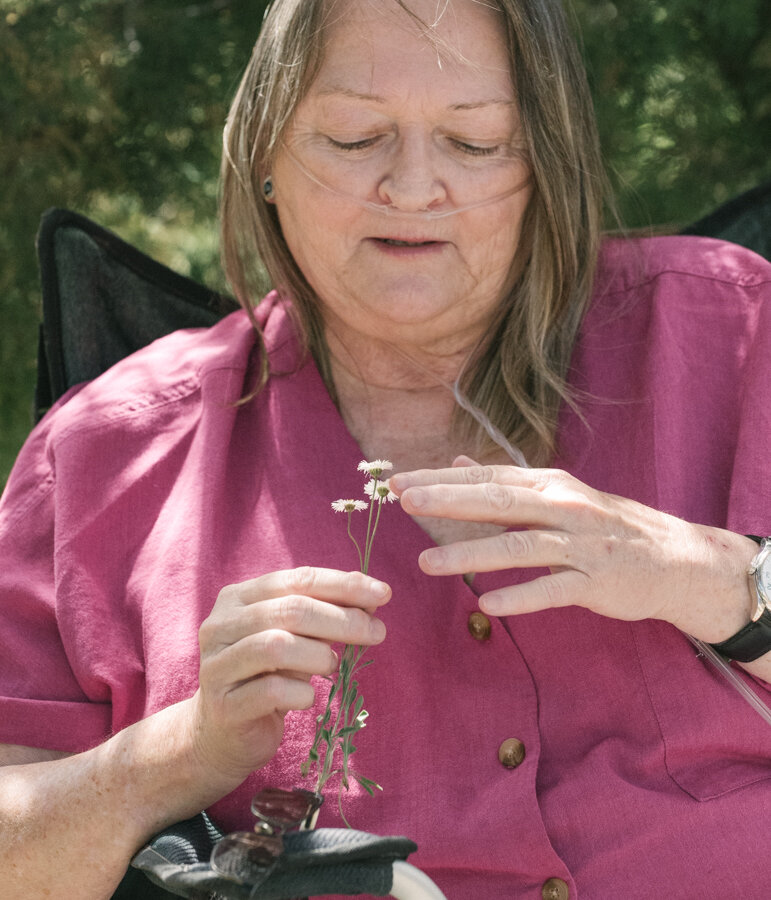
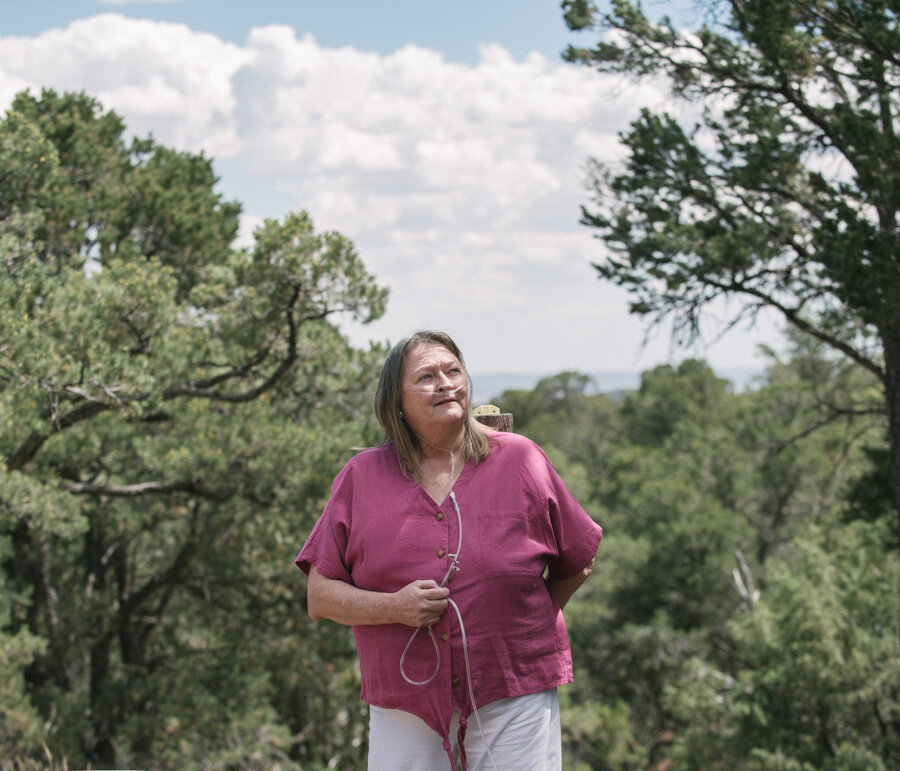
Until March, Fran Bednarek, a nurse in Santa Fe, traveled to the homes of people in need and helped them figure out how to keep it together. Now, she has lost all her income, is stuck inside, and depends on a charity’s weekly boxes of frozen dinners.
“I’ve been fiercely independent all my life,” she said. “I don’t ask for help. I keep thinking, ‘Are you sure I can have this?’ I get kind of a guilt feeling of not being able to pay my own way.”
In Santa Fe, the number of people receiving meals from Kitchen Angels, the nonprofit that is helping Garcia and Bednarek, has shot up by 27 percent in the past six weeks, said Jeanette Iskat, the agency’s client services manager.

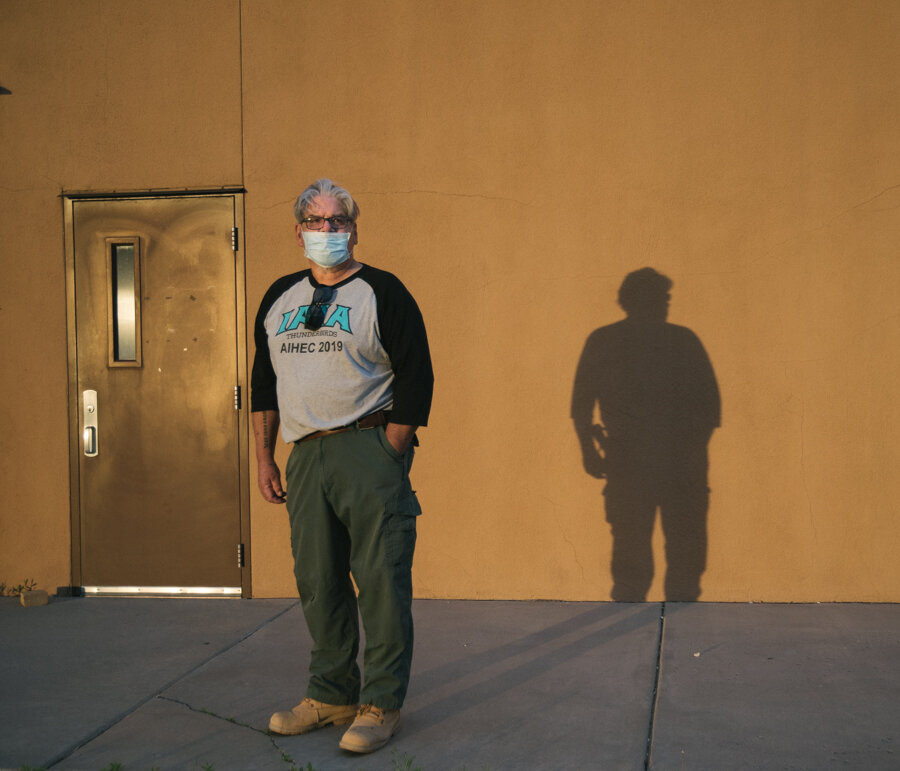
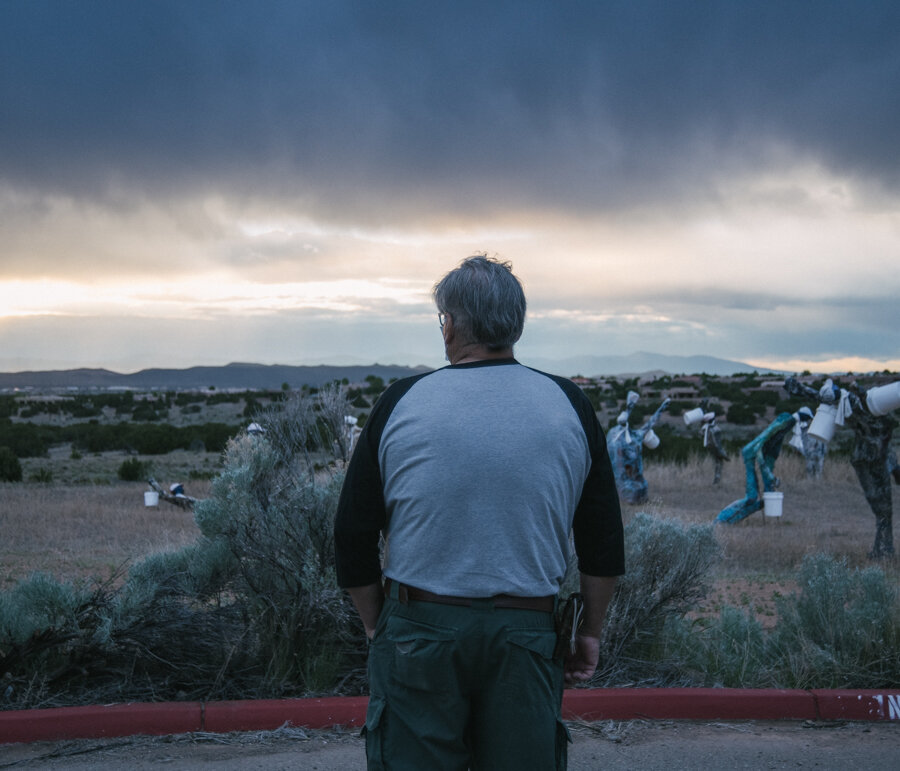
“I’ve always been self-sufficient and I was taught to take care of myself,” said T’cha-Mi’iko Cosgrove, a 73-year-old artist who was studying at the Institute of American Indian Arts in Santa Fe when the virus hit, closing the dormitories and dining hall. Now, with no job, no school and no income, he relies on food handouts, with no end in sight.
“I don’t know where I’ll go or what I’ll do,” he said. “But I’m not panicking. Today, I’m just not thinking about it.”
The Washington Post: Love & Loneliness in the Time of the Coronavirus
To be given an assignment with absolute creative freedom, especially during this confining period, was a gift. I took out my 4x5 camera and expired instant film and spent two days making these images. Take time to dig into all the artists' work, beautiful diverse views of love and the pandemic from around the world. Read here
My tiny apartment is filled with objects that remind me of people I care about and memories of different places and times. Using these objects and my limited space, I created scenes dedicated to them and the confusing emotions we’re feeling under quarantine.
As an introvert and someone who’s been relatively calm during this period of isolation, the process of photographing confronted me with my deep longing for these loved ones and my anxiety for their well-being.
Black MC History Month
In honor of Black History Month, I’ve been posting about African-American motorcycle club history on the @ezyryders instagram page. Below, find all the riders I researched and featured.
Photo by Elliot Michael Gold
Are you familiar with Cliff Vaughs? Vaughs was active in the civil rights movement, a photographer, film maker, member of Chosen Few MC and an ingenious motorcycle designer and builder. He’s responsible for some of the most iconic bikes in history, those from the film Easy Rider—but he never received the credit he deserved, as the film reached mainstream success and his contributions were largely ignored. For decades he was homeless and aimless, drifting around the world working odd jobs. Two years before his death in 2016, motorcycle historians and bloggers revived his legacy. Vaughs started fielding invitations from around the world, from Sweden to Japan, to be an honored guest at motorcycle rallies and conferences. “I apologize profusely for not being more forceful about your role in [the Easy Rider motorcycles’] existence and their perfect design,” Peter Fonda wrote Vaughs, after also issuing a public statement. Vaughs died knowing that the world finally understood his legacy. RIP Cliff! Read more at the LA Times.
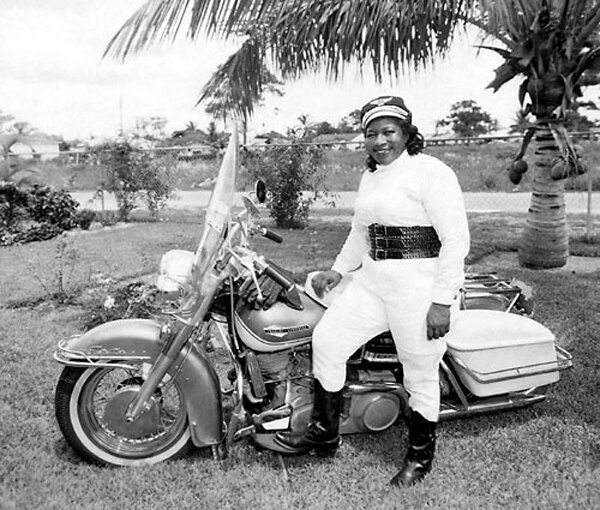
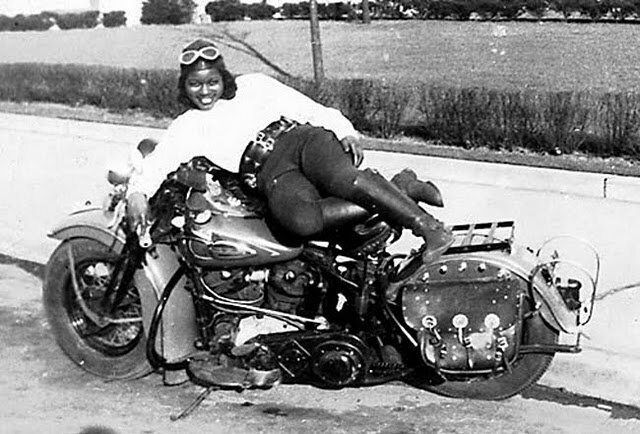
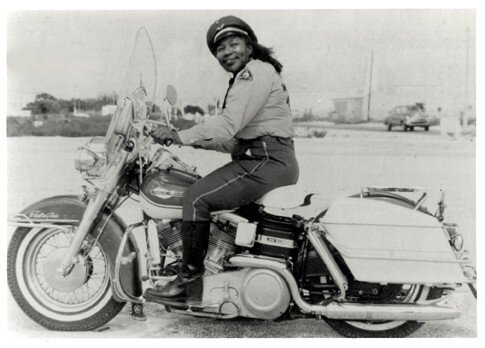
For the next installment of Black History Month honoring African-American riders, we’re featuring my all-time favorite rider Bessie Stringfield. Stringfield had only been riding motorcycles for three years before becoming the first African-American woman to ride solo across the United States. The year was 1930, and she was only 19. Despite rampant racism and sexism, Stringfield traveled solo to all the Lower 48 states, a true testament to her love of riding as it could be extremely dangerous. Stringfield later said, “If you had black skin you couldn’t get a place to stay. I knew the Lord would take care of me and He did. If I found black folks, I’d stay with them. If not, I’d sleep at filling stations on my motorcycle.” Stringfield would toss a penny onto a map and travel wherever it landed—to fund her trips, she performed motorcycle stunts for local carnivals. And during World War II, she served as a civilian despatch rider for U.S. military. After the war, Stringfield moved to Miami where she founded the Iron Horse Motorcycle Club and became known as “The Motorcycle Queen of Miami.” She was later inducted into the American Motorcyclist Association’s Hall of Fame and had an award named after her, given to female riders breaking barriers. What a life! A truly incredible woman.



Tonight’s post on African-American motorcyclists for Black History Month is dedicated to the countless African-Americans who fought for the United States military. They enlisted even when they were fighting for dreams and ideals that were denied them. The Tuskegee Airmen of World War II are particularly well-known for their skill and bravery. Some became passionate about flying and as veterans hoped to turn it into a career, but the racist segregation laws prevented them from doing so. They saw motorcycle riding as another way to fulfill a love of the adrenaline rush. Did you know there are chapters across the nation of the Tuskegee Airmen Motorcycle Club, dedicated to preserving their memory? More on African-American vets and their special connection to the MC world coming soon...
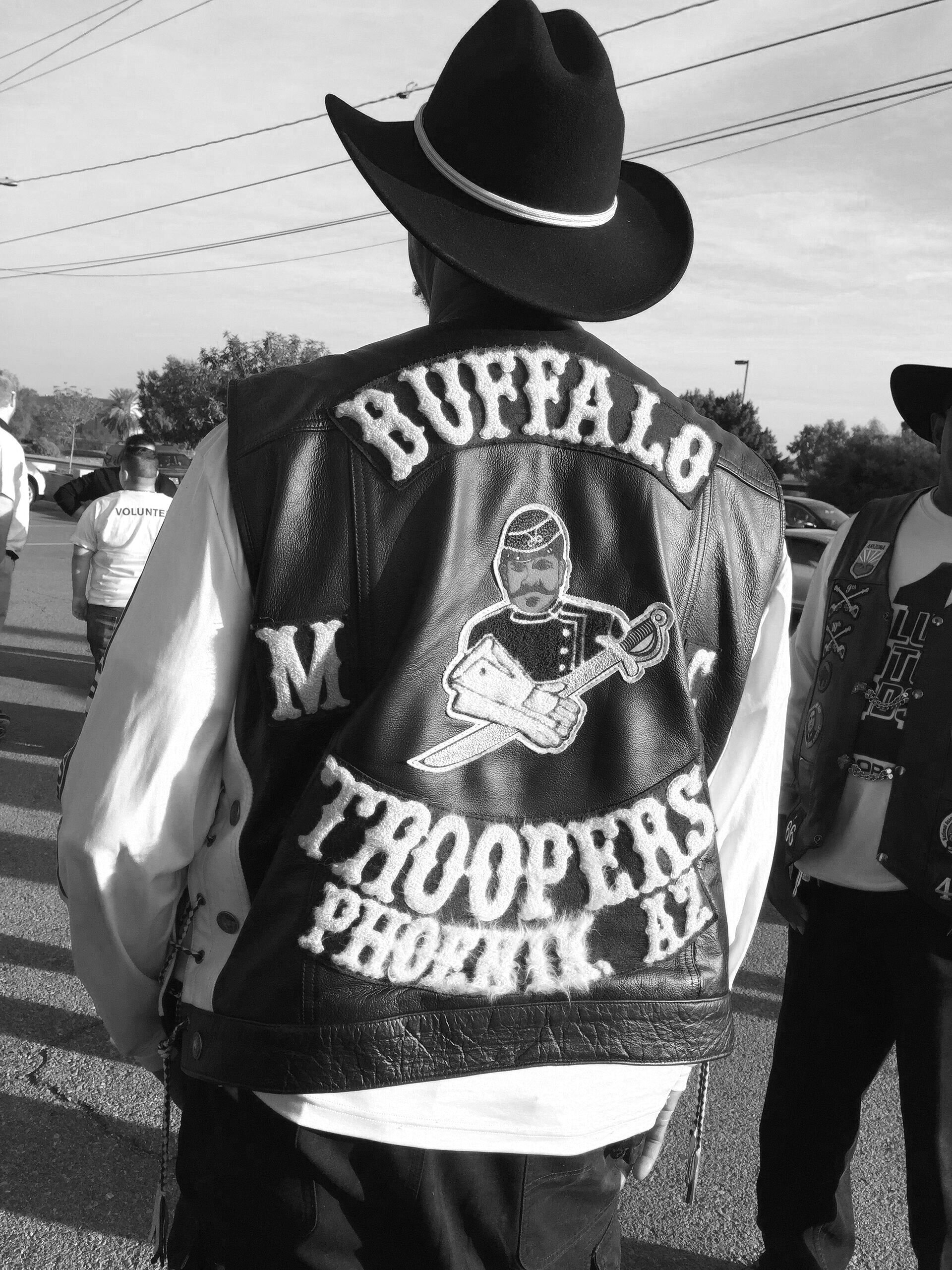
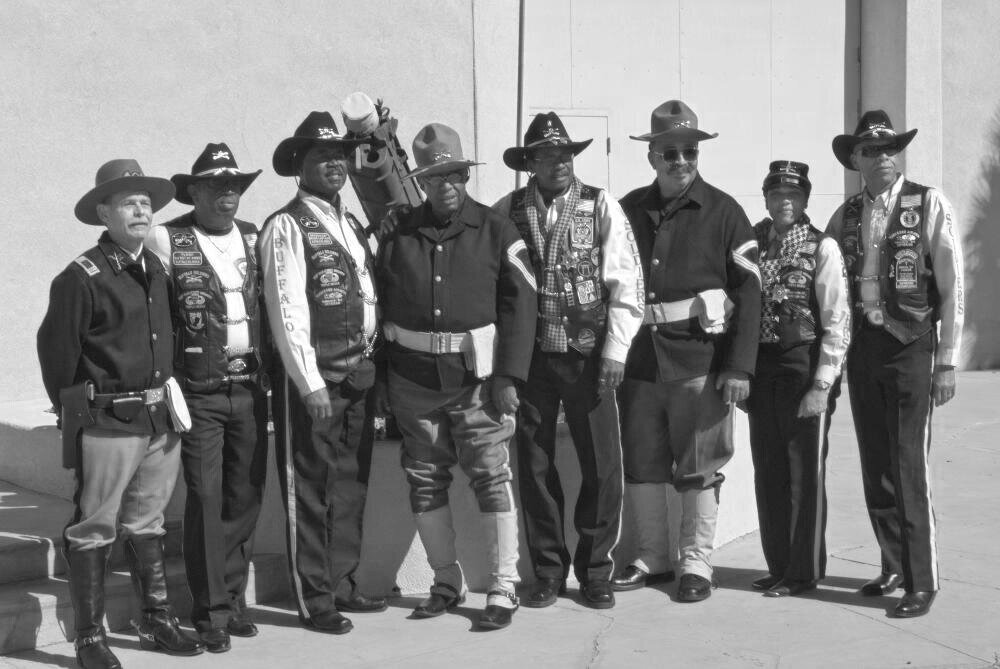
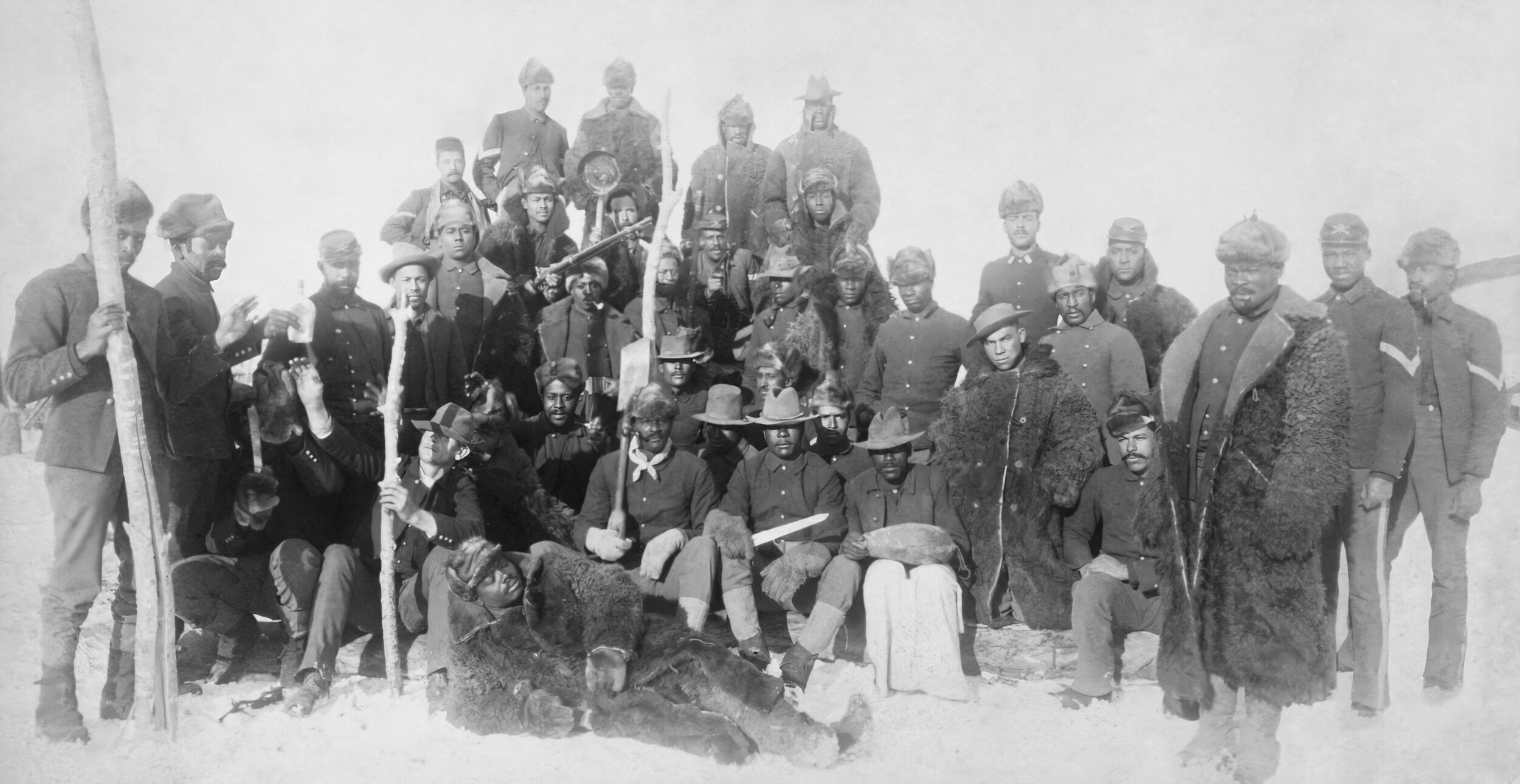
We all know the Bob Marley song “Buffalo Soldiers,” but who were they and how do they tie in with today’s black motorcycle club culture? To continue with #BlackHistoryMonth and #BlackChopperHistory... the Buffalo Soldiers were originally members of the 10th Cavalry Regiment of the US Army, formed in 1866 at Fort Leavenworth, Kansas. There are disputing accounts of how they got their nickname, but many agree it came from either the Cheyenne or Comanche Native American tribes. Over the next 80 or so years, Buffalo Soldiers came to mean any black soldier, not just the 10th Cavalry Regiment, until 1948 when the military was desegregated. There’s so much more to learn about the Buffalo Soldiers, if you’re curious I encourage you to look into them more. But to tie that history into today’s MC world, in 1993, Ken Thomas of Chicago founded the first Buffalo Soldiers MC. Like the Tuskegee Airmen MC mentioned in the last post, the Buffalo Soldiers MC used their name and image to honor the memory of these vets who served their country despite systemic prejudice. It makes sense that the descendants of some of these cavalry men would want to ride their iron horses as Buffalo Soldiers! They are now one of the biggest black MCs with over 140 chapters and 5,000 members. Shout out to the Buffalo Soldiers, from the past and present!
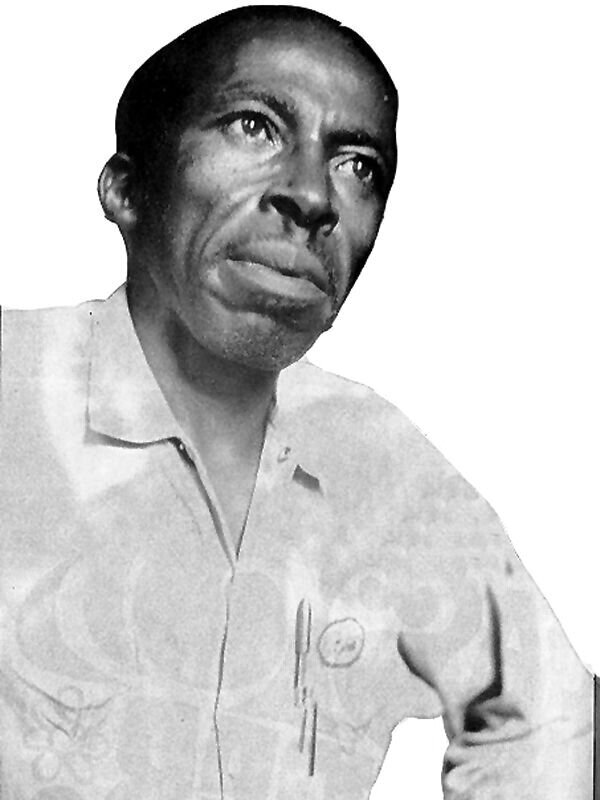

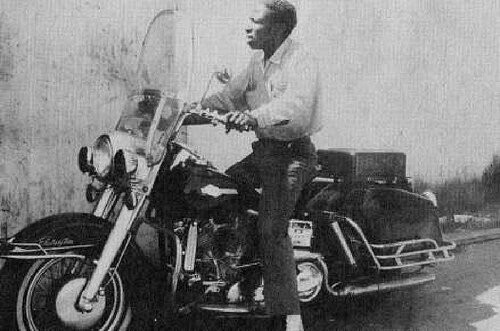
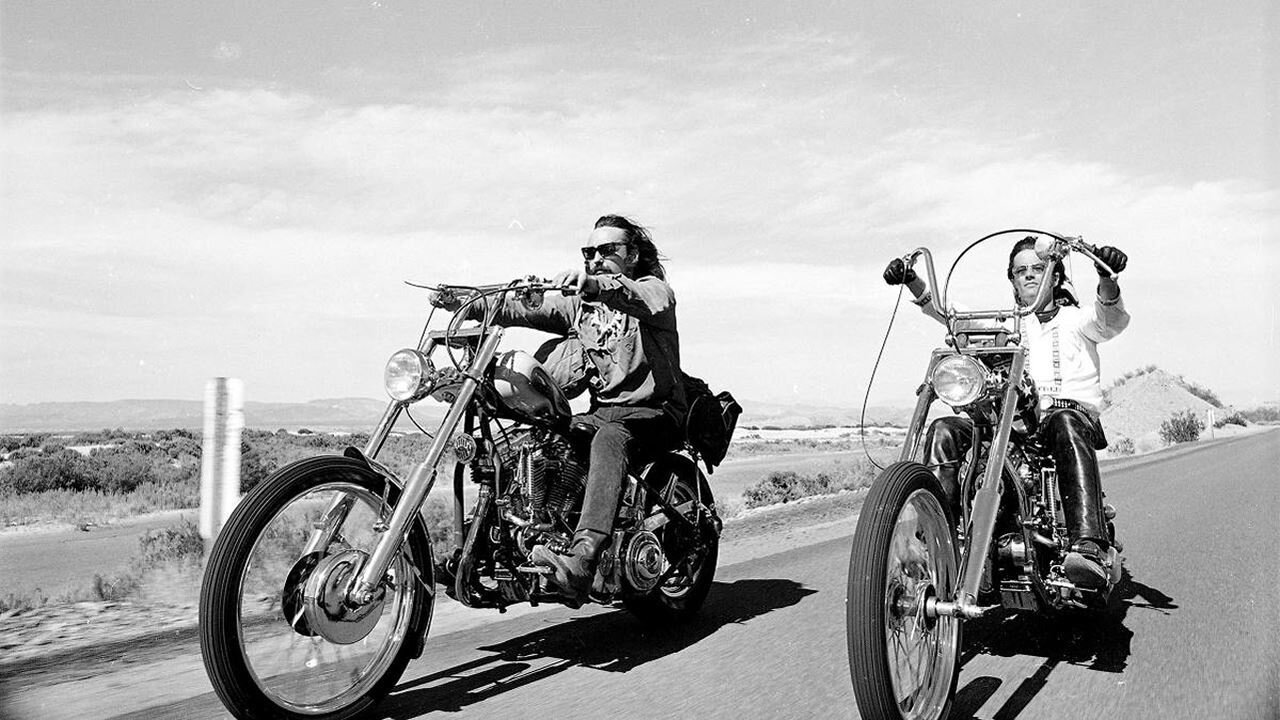
The first #BlackHistoryMonth / #BlackChopperHistory post this month talked about Cliff Vaughs, the man responsible for the choppers in the film Easy Rider. Digging a little deeper into the making of this film and these bikes, it’s a messy and confusing story, in particular with how the two African-American bike builders were treated and left uncredited for their work for decades. Peter Fonda, who produced and starred in Easy Rider, hired Vaughs to coordinate the motorcycles for the film. Vaughs was talented, but he was still young and needed the expertise of his mentor—so he rode into South Central Los Angeles, to Ben Hardy’s motorcycle shop. For the famous Captain America chopper, Hardy used old Harley-Davidson frames, ca. ’48-’56. The steering head was cut off and repositioned at a 45 degree angle, requiring a 12” extension to the telescopic forks. A set of AEE fork clamps were used, with extended handlebar clamps (dog bones). Hardy also built the Billy chopper in Easy Rider, and the film ended up making $60 million over the years. The Captain America bike (or what is believed to be the bike) sold for $1.3 million back in 2014. Hardy never received the recognition he deserved until recently, mostly thanks to the research of The Vintagent/Paul D’Orleans. Until Hardy’s death in 1994, he continued to work on bikes in his shop, and was respected within the local black biker community. But as the builder of some of the most iconic bikes ever, it’s sad that he never received wider fame.
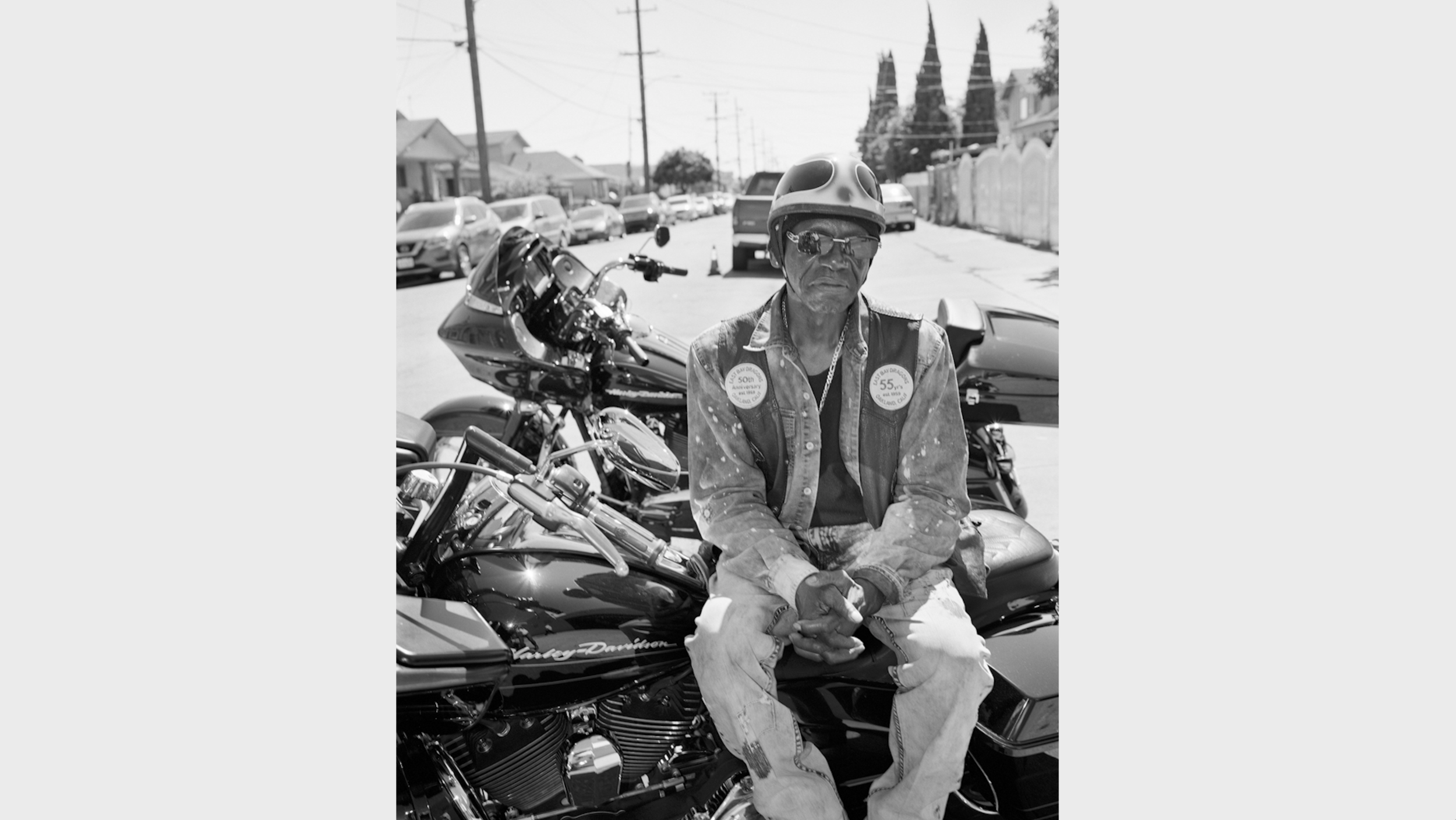
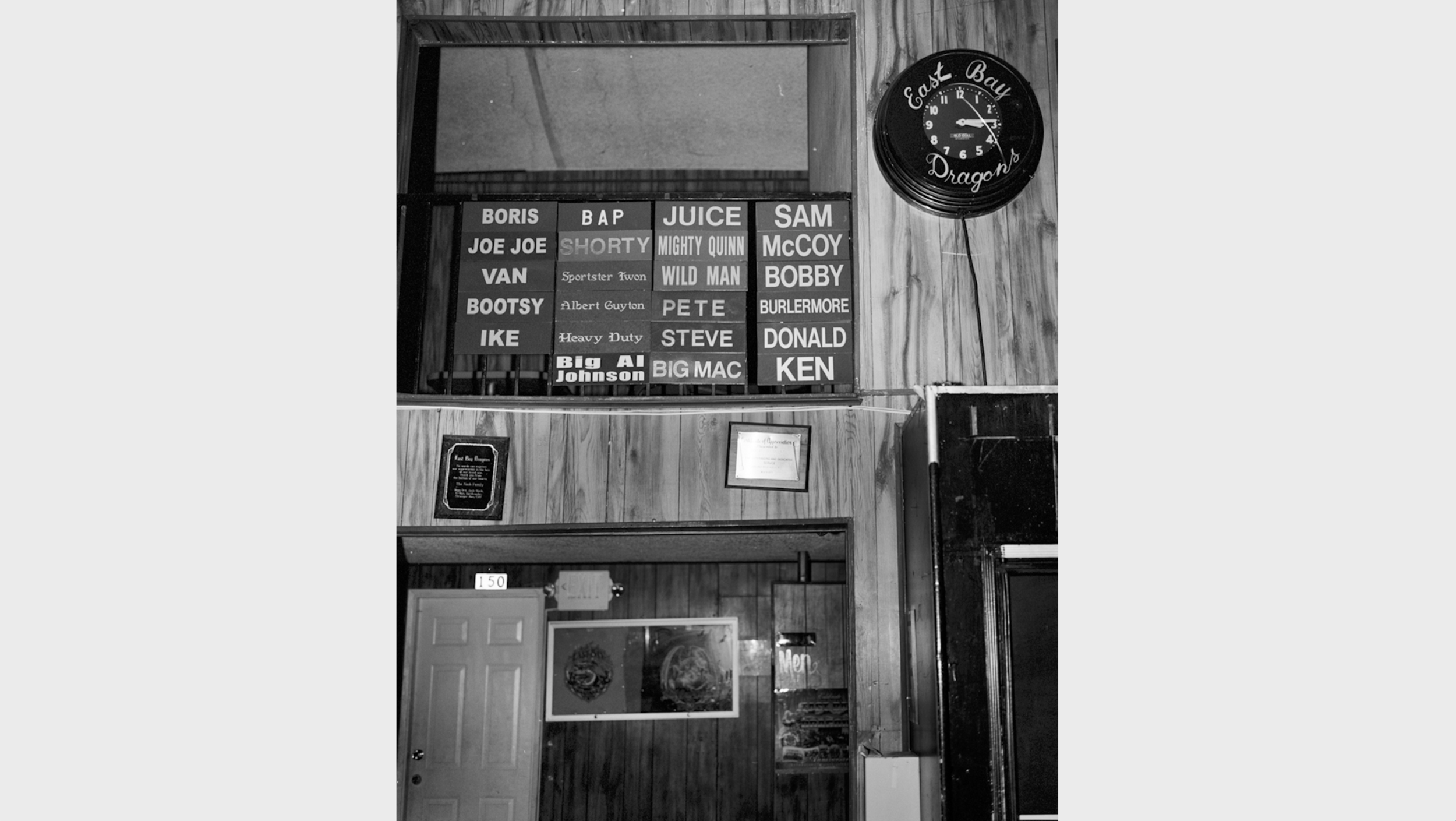
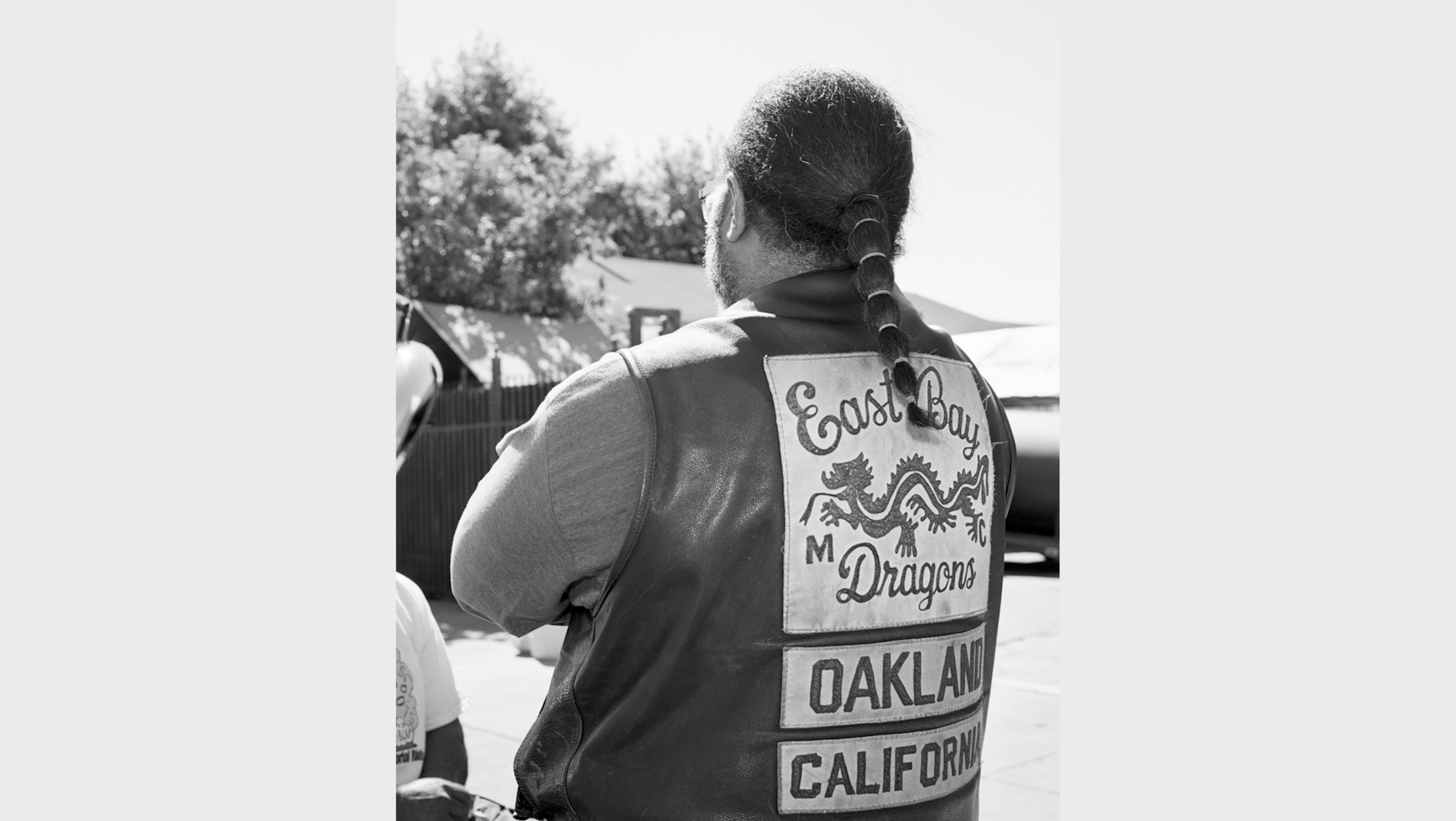
Today for #BlackHistoryMonth : the legendary East Bay Dragons MC. When I was in northern California over the summer, I had to take a trip to the East Bay Dragons motorcycle club. Four years ago, at the beginning of photographing Ezy Ryders, I came across the book by the Dragons’ founder and president, Tobie Gene Levingston, called “Soul On Bikes.” In it, Levingston reminisces about how he fell in love with Harley-Davidson motorcycles, but back in the 1950s, the few MCs that existed didn’t allow African-Americans. He started the East Bay Dragons in 1959, the first exclusively black MC. Levingston remains the club’s one and only president, and they celebrated their 60th anniversary in 2019. They became a crucial part of Oakland’s history and the history of American MCs. I’d highly recommend his book if you’re interested in reading more about the early MC days straight from the rebel pioneer’s mouth. And big thanks to the Dragons for the warm welcome this past summer. [Photos by Cate Dingley]
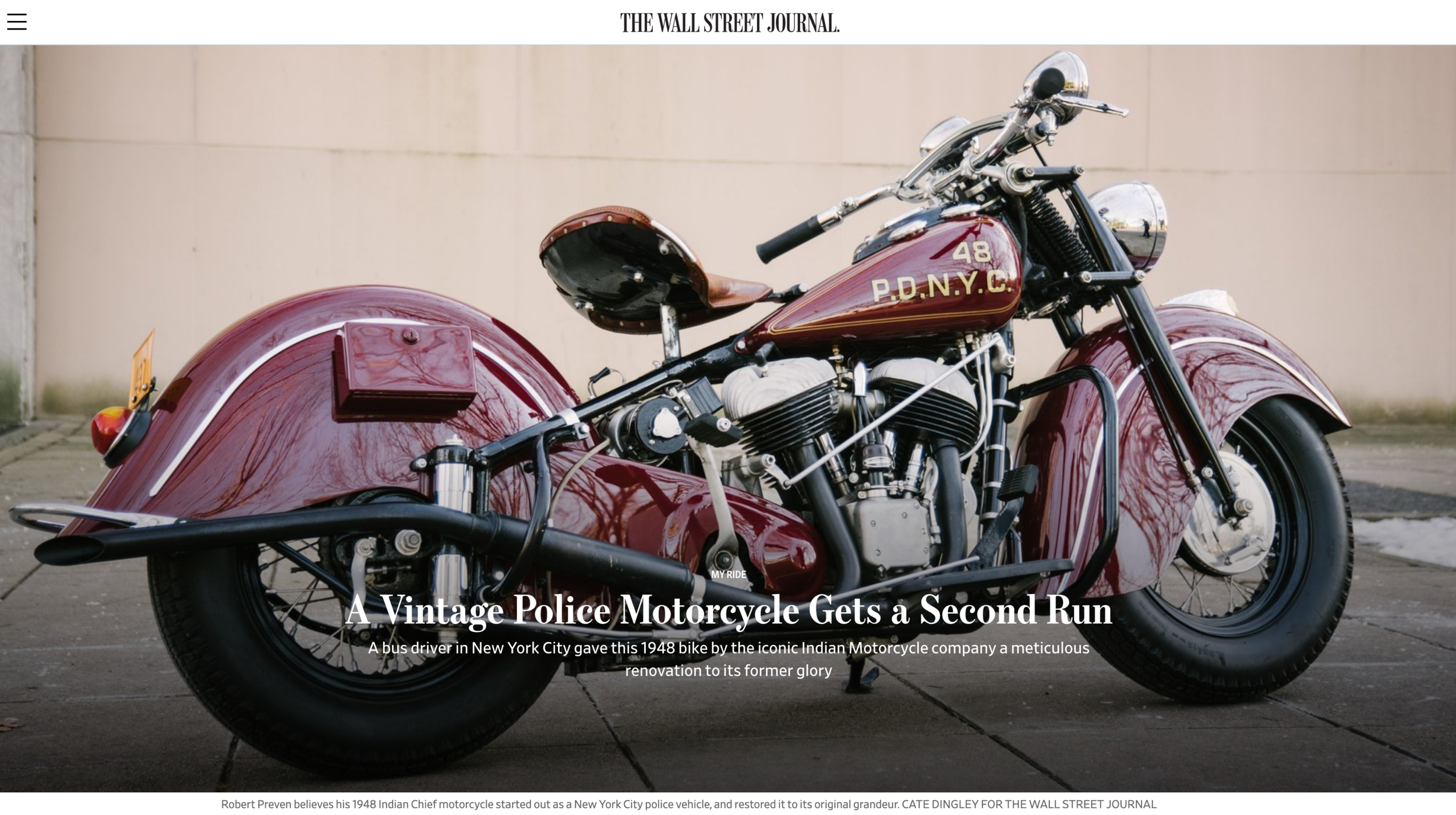
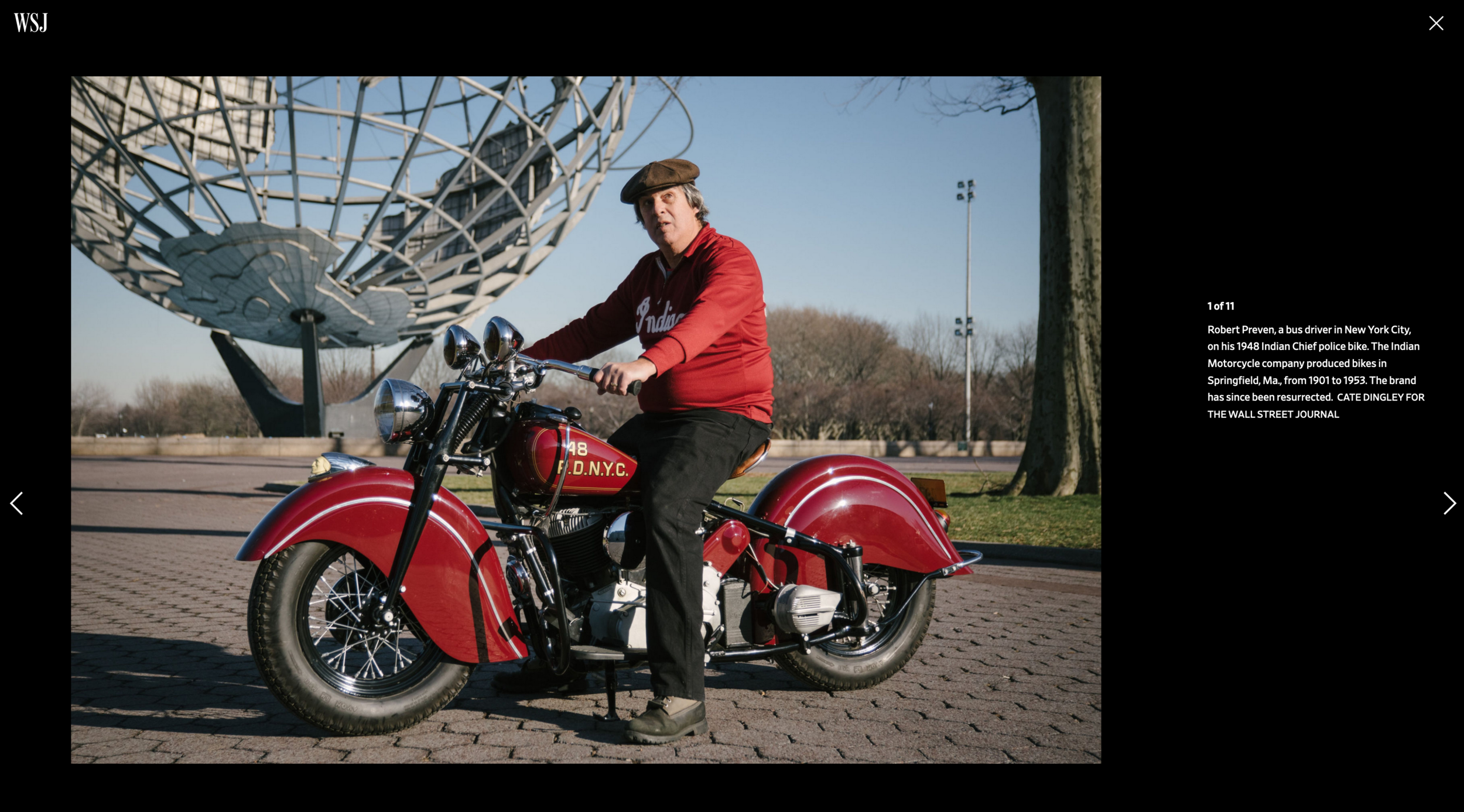
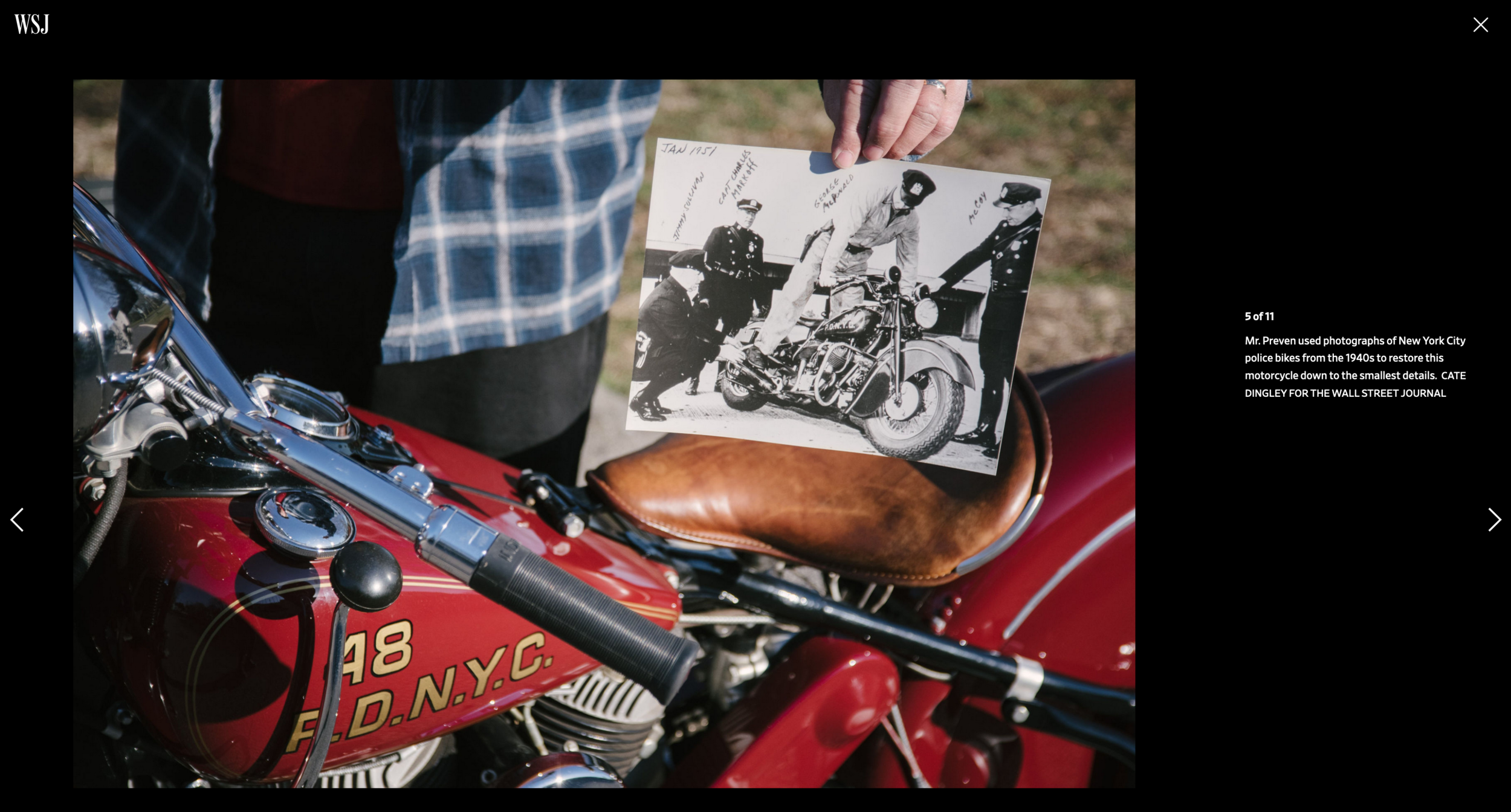
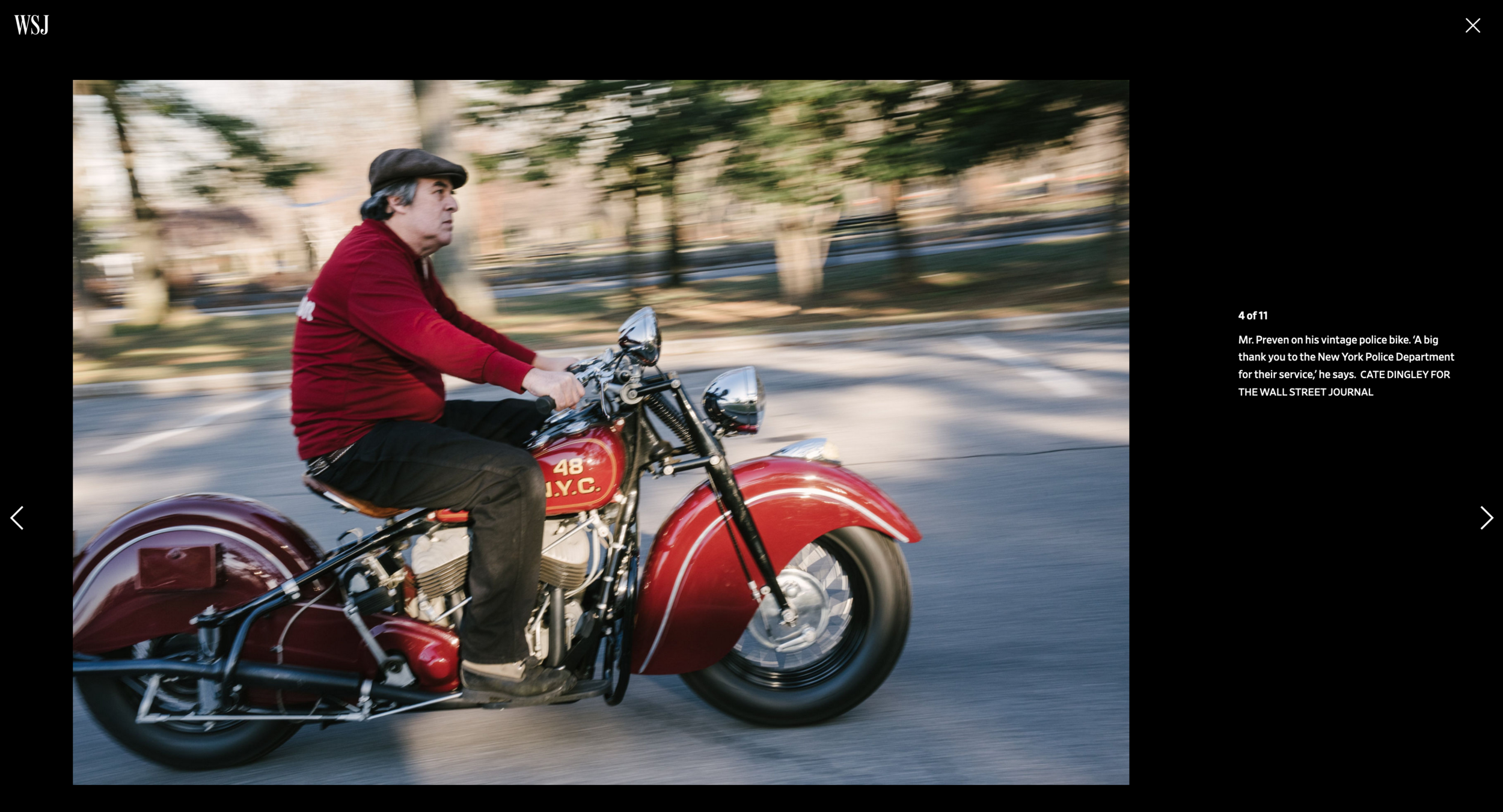
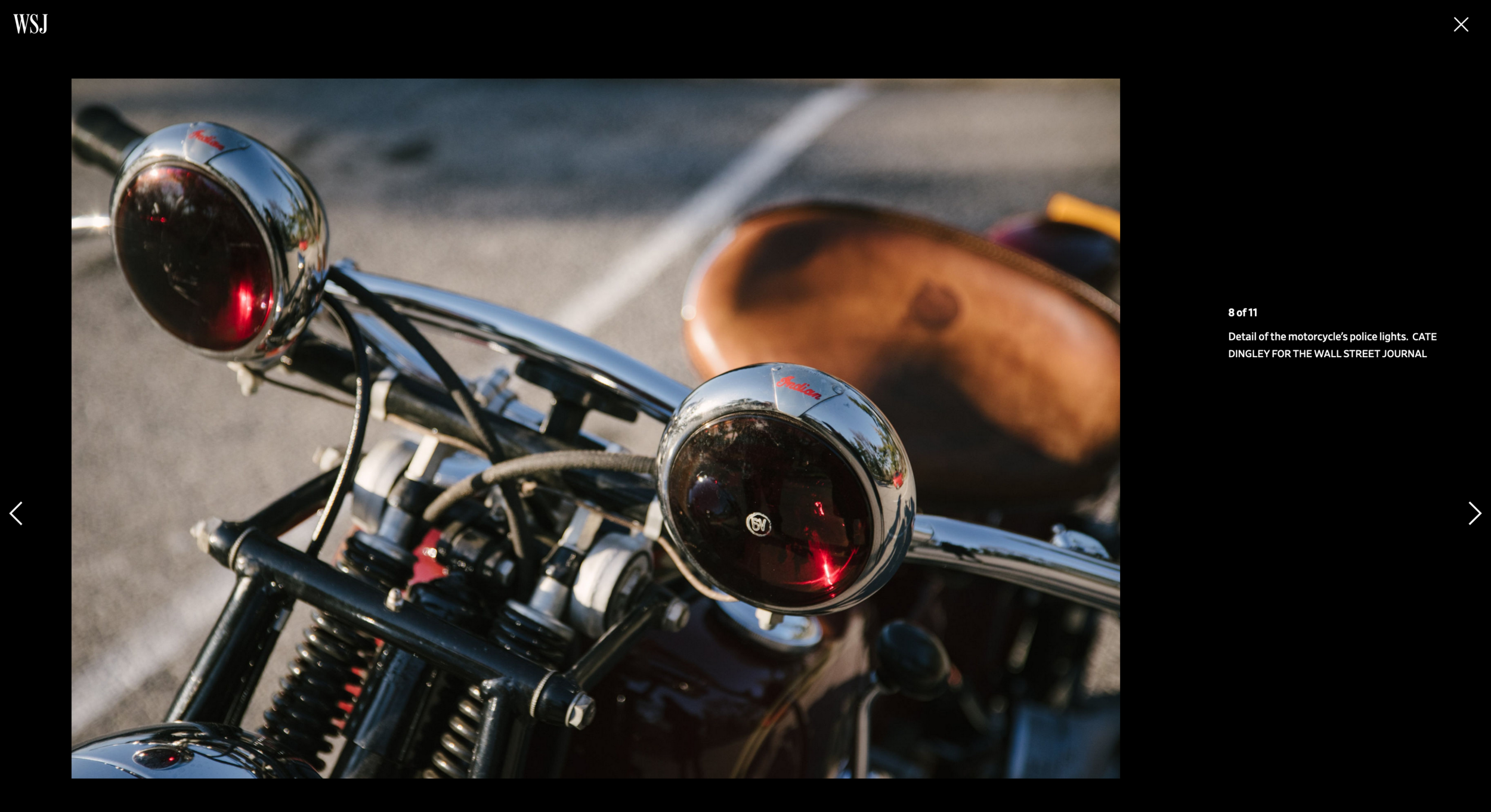

My Ride: NYPD Motorcycle
Another contact I met through Ezy Ryders, Robert Preven displays his 1948 NYPD Indian Chief motorcycle in the Wall Street Journal column “My Ride.” We had a good shoot at Flushing-Corona Meadows Park in Queens on a freezing January day. Read here
The New Borderwall
Yesterday I photographed the new US/Mexico border wall in Santa Teresa, New Mexico for Bloomberg Business. Driving down empty roads for over an hour with no sign of where to go, we saw a couple longhorns and a little dirt road. We turned left, drove another couple miles, and finally found the wall. It feels imposing, out of place, arbitrary. Birds fly between the diamond slats. It’s quiet, almost silent, but with the strange sense that there are likely people nearby.
Visit to the East Bay Dragons MC
When I was in northern California a couple weeks ago, I had to take a trip to the legendary East Bay Dragons motorcycle club. Four years ago, at the beginning of photographing Ezy Ryders I came across the book by the Dragons’ founder and president, Tobie Gene Levingston, called “Soul On Bikes.” In it, Levingston reminisces about how he fell in love with Harley-Davidson motorcycles, but back in the 1950s, the few MCs that existed didn’t allow African-Americans. He started the East Bay Dragons in 1959, America’s first all-black MC. They became a crucial part of Oakland’s history and the history of American MCs.
Thanks to the Dragons for welcoming this stranger from across the country, to your clubhouse. Check out the @ezyryders instagram for more on black motorcycle clubs.
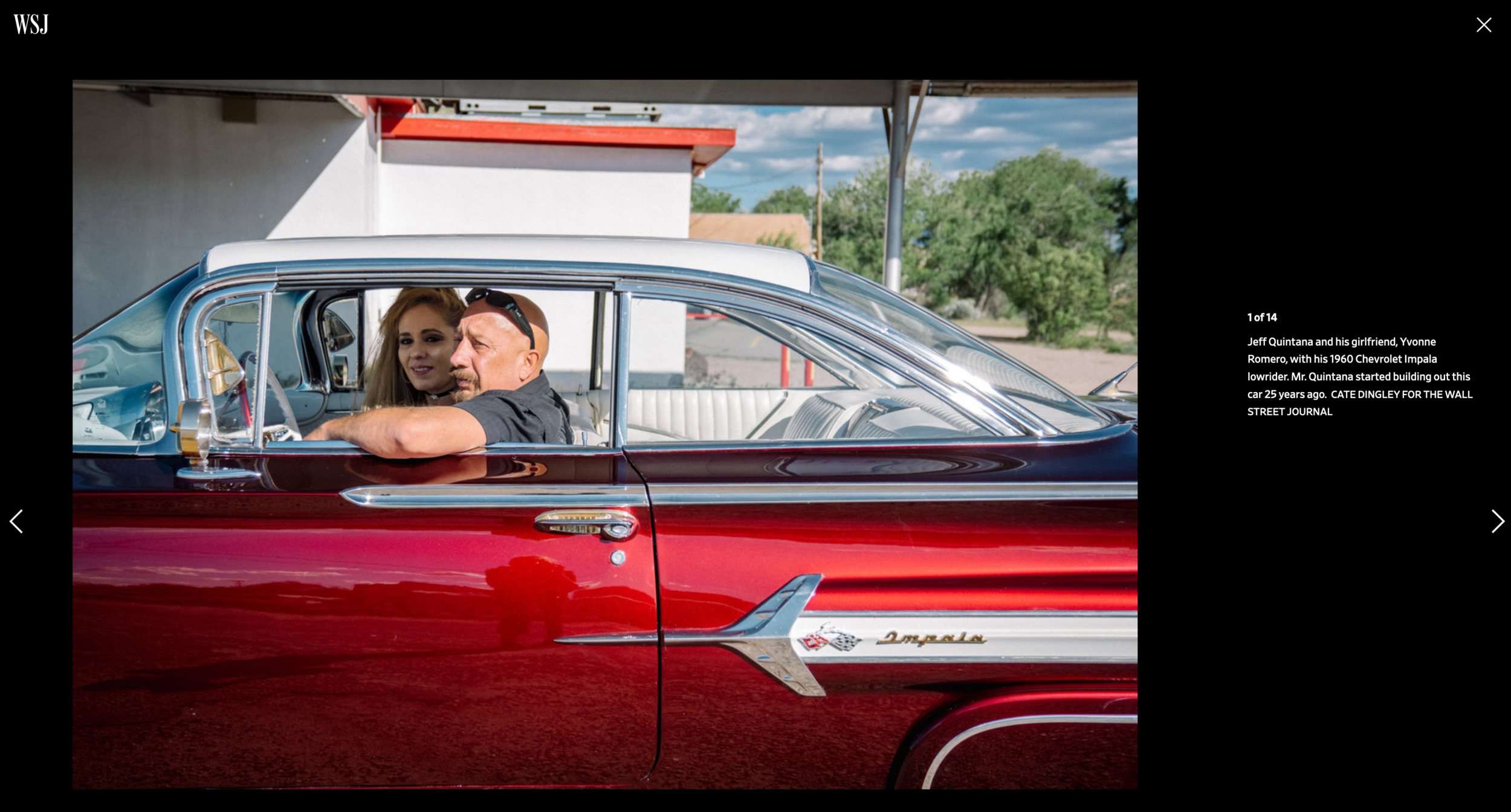


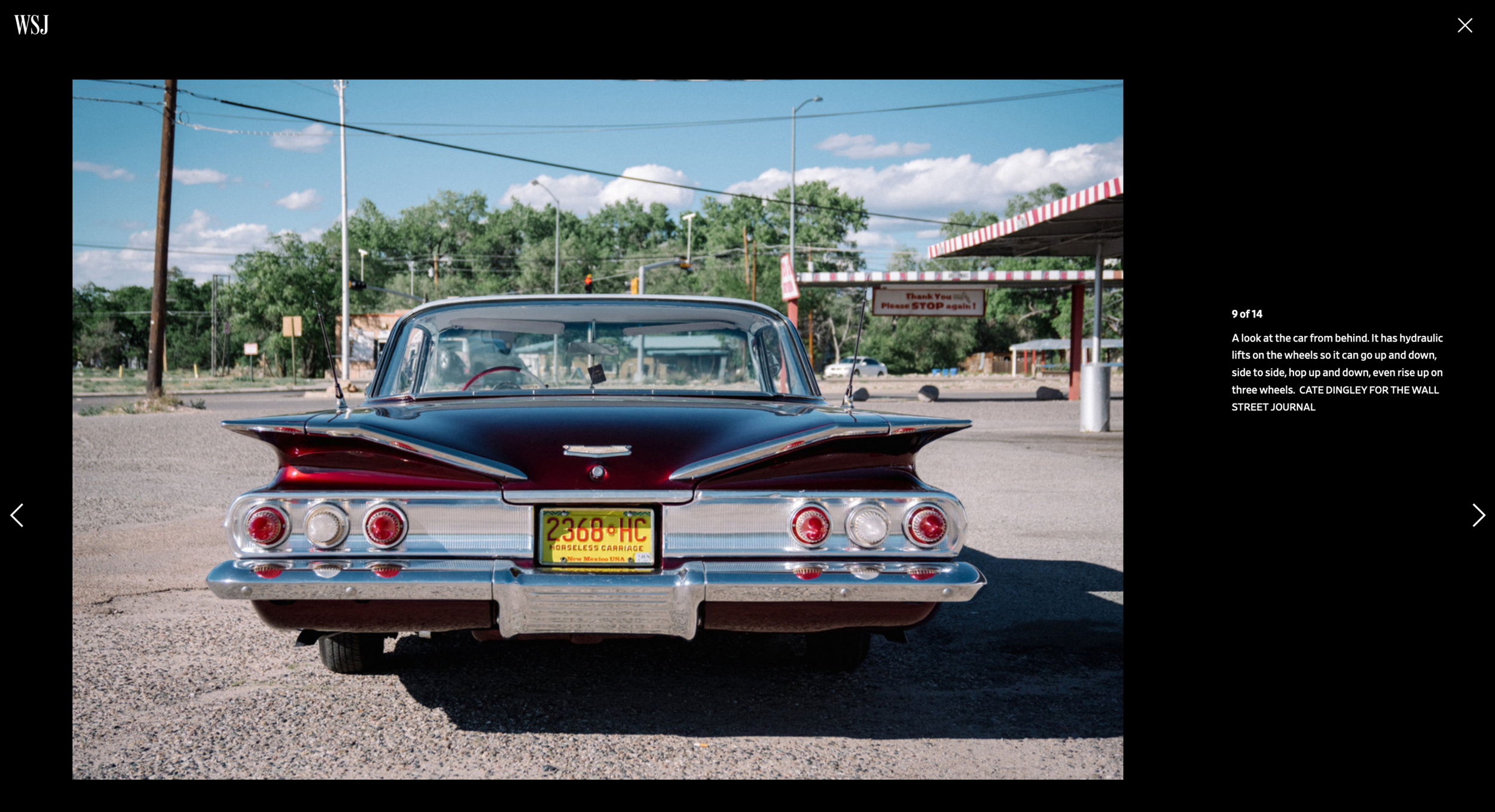
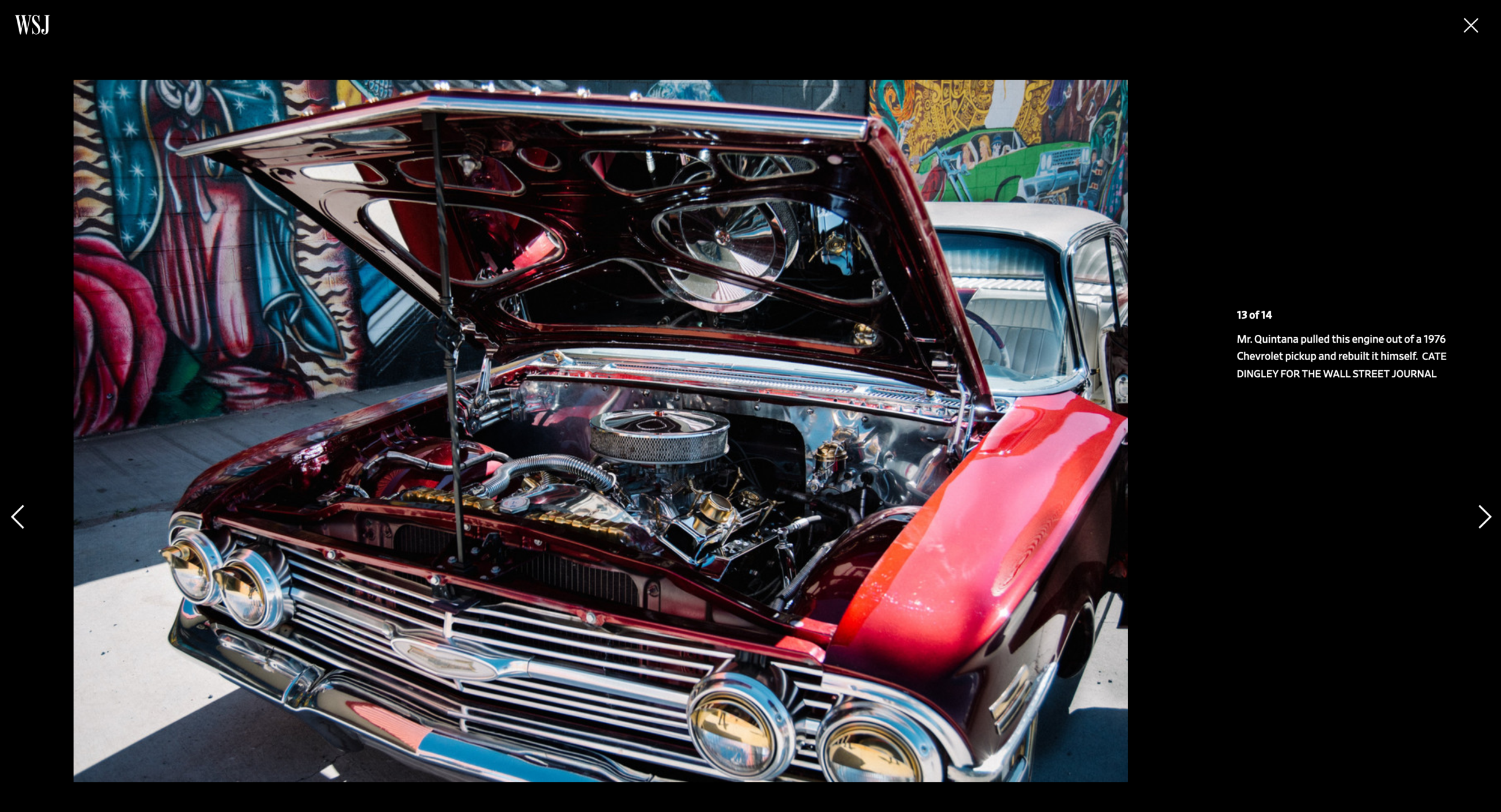
My Ride: Chevy Impala Lowrider
Online today/in print tomorrow in The Wall Street Journal: awesome lowrider couple Jeff Quintana and fiancée Yvonne Romero with their 1960 Chevy Impala, which they’ve restored to perfection. Even the engine and hydraulics are gold- and chrome-plated ✨ these two have some serious skills. And in the world’s low rider capital, too! Read here

